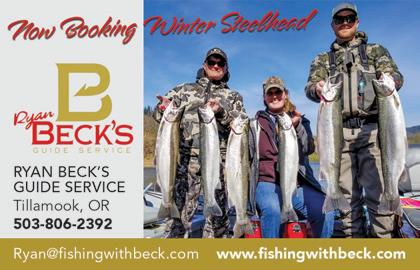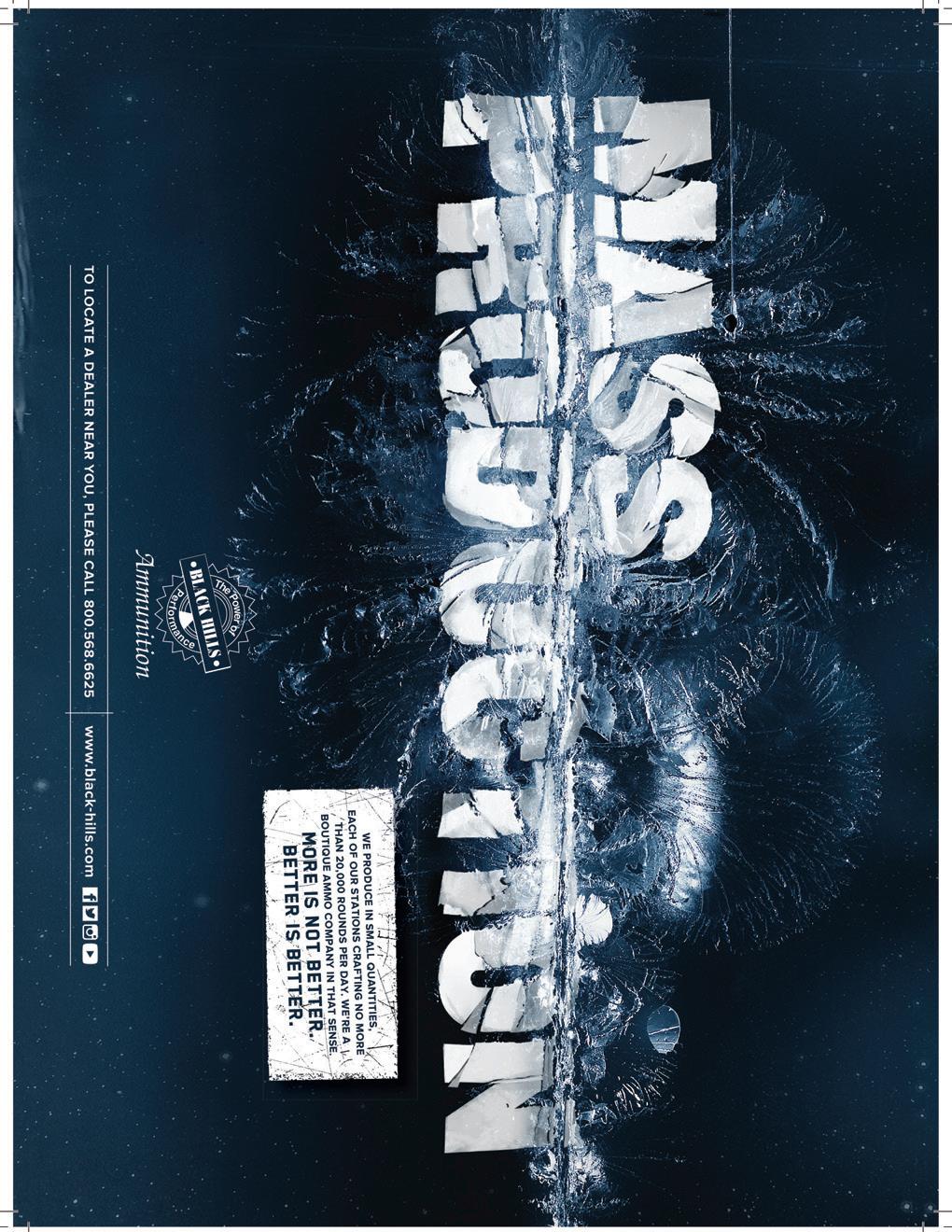











Nestled in the foothills of the Ozark Mountains in Missouri, High Adventure Ranch offers all of the excitement of western big game hunting without the costs and hassles.
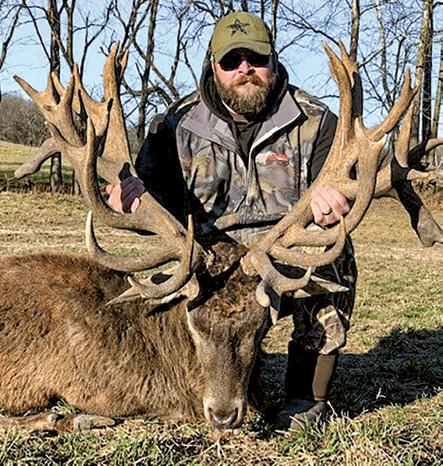
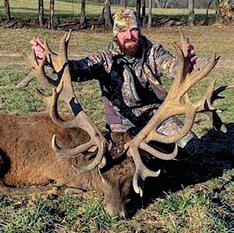
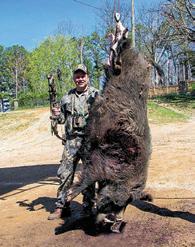
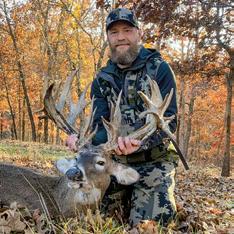



Be prepared for a fair chase hunt! With over 3 square miles of prime natural habitat, our ranch provides challenges to even the most seasoned hunter, but our experienced guides and “No Game, No Pay” policy practically ensure that you won’t go home empty handed. In addition, High Adventure’s hunting season is year-round, allowing ample time to fit the most demanding schedule.
While our whitetail, elk, wild boar and red stag hunts top our hunter’s most popular lists, hunters from around the world have visited our ranch, hunting everything from American bison, black buck, fallow deer to Spanish goats and African game.
So, whether you desire a 10-point whitetail mount for your trophy room or simply the thrill and challenge of taking down one of our many elusive big game animals, High Adventure Ranch guarantees memories of an unparalleled hunting experience that will bring you back again and again.








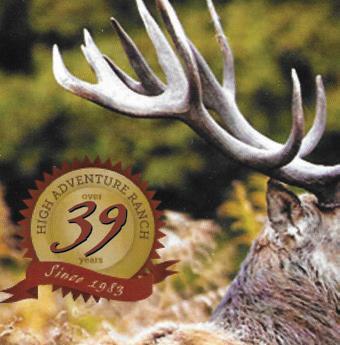
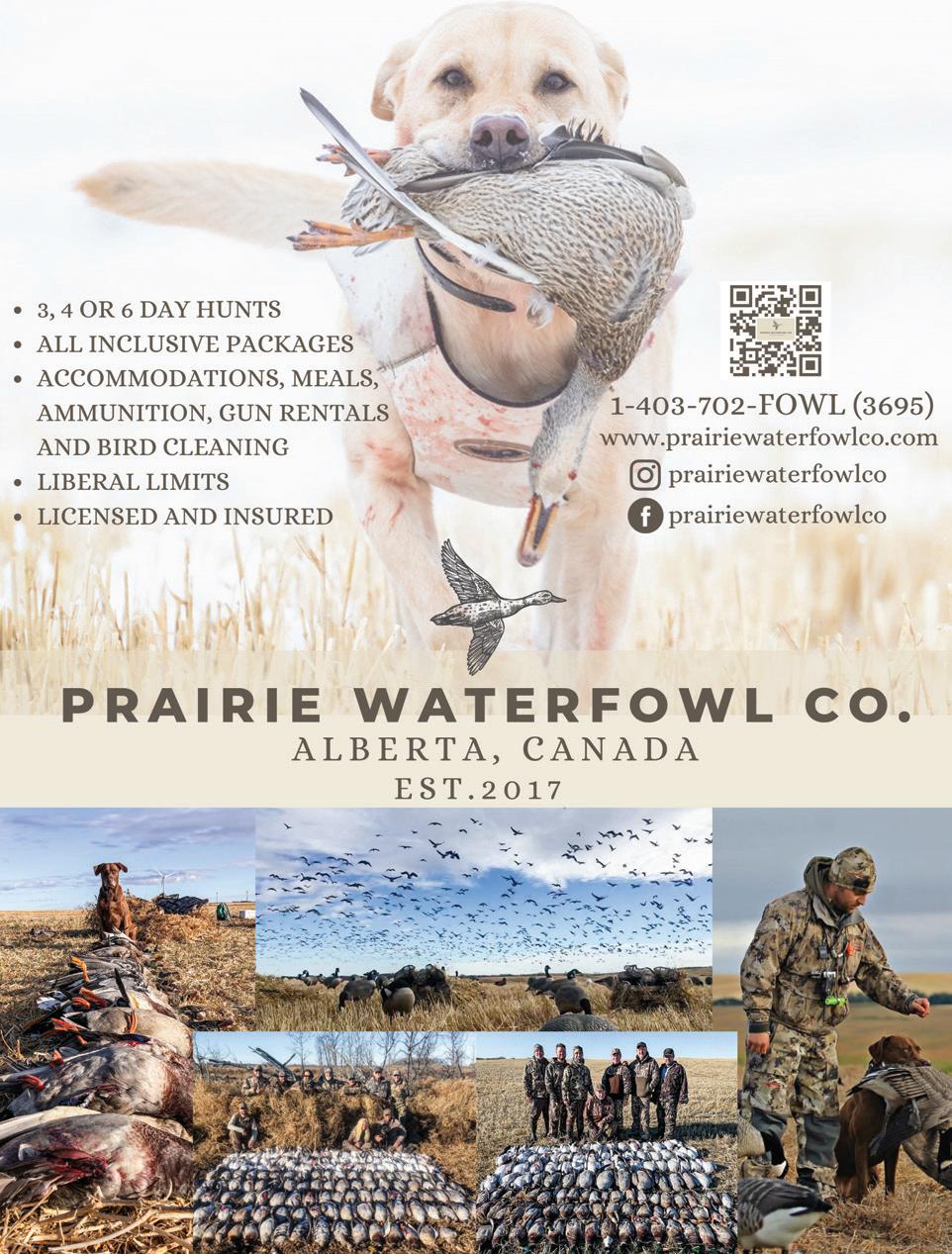
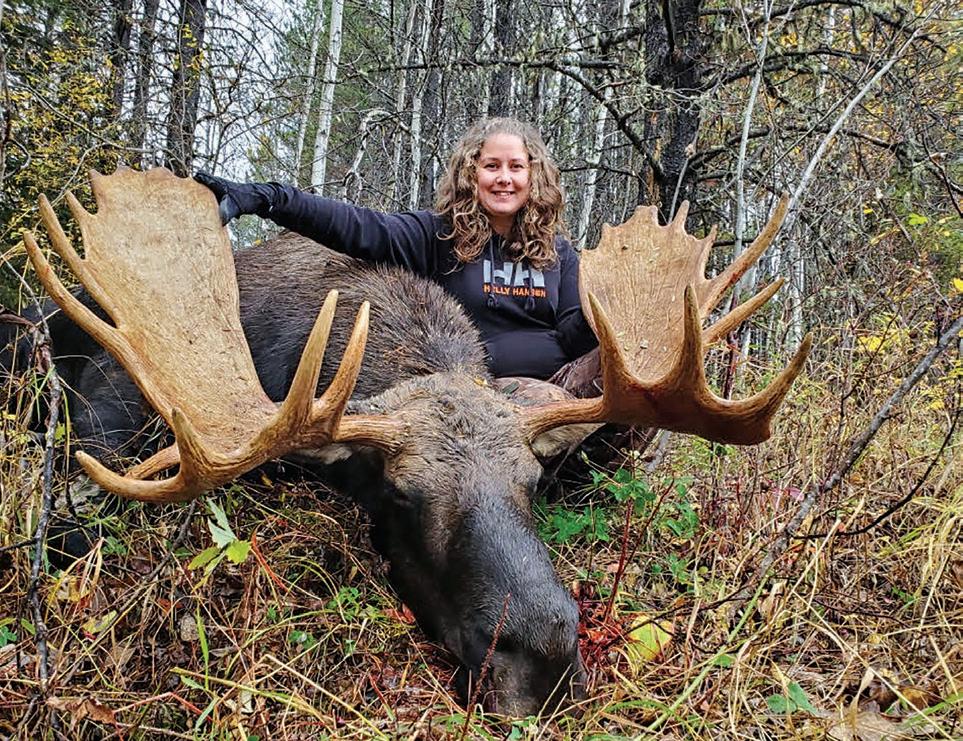

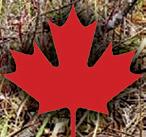

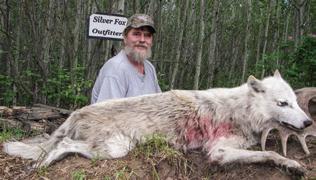

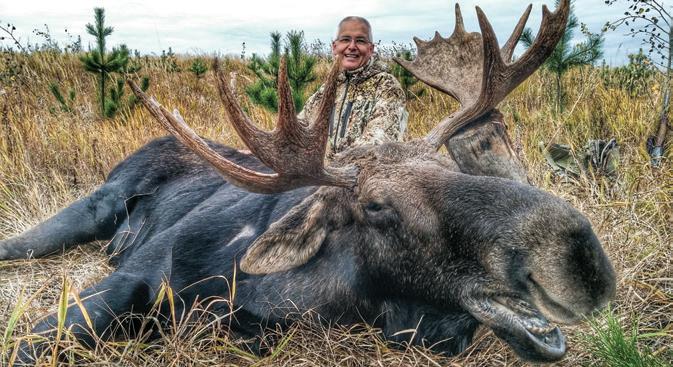
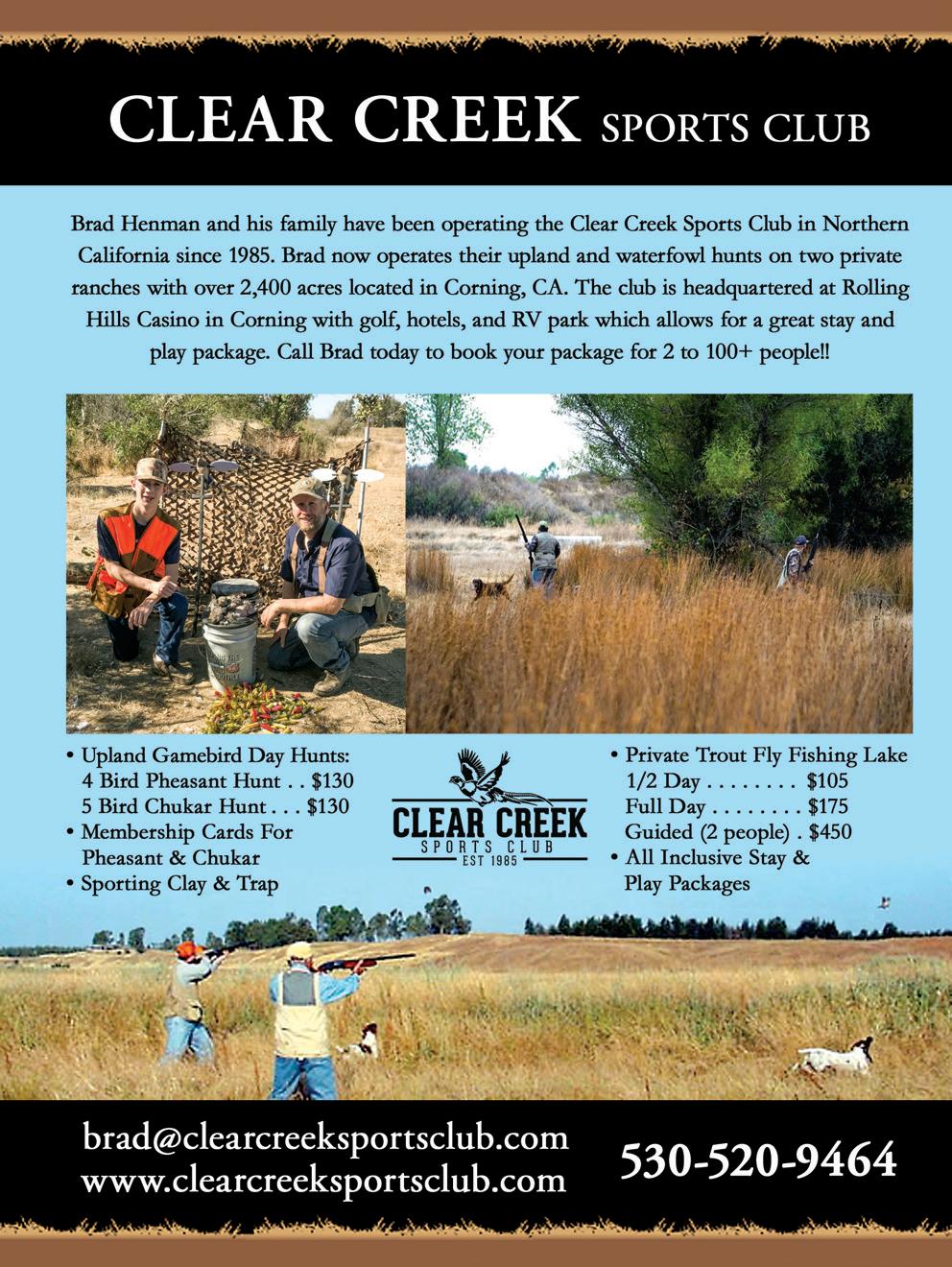

PUBLISHER
James R. Baker
GENERAL MANAGER
John Rusnak
EXECUTIVE EDITOR
Andy Walgamott
EDITOR
Chris Cocoles
WRITERS
Braith Dihle, Bjorn Dihle, Scott Haugen, Tiffany Haugen, Brian Kelly, Daniel Ritz SALES MANAGER
Paul Yarnold
ACCOUNT EXECUTIVES
Riland Risden, Mike Smith
DESIGNER
Lesley-Anne Slisko-Cooper
PRODUCTION ASSISTANT
Kelly Baker
WEB DEVELOPMENT/INBOUND MARKETING



Jon Hines
ADMINISTRATIVE ASSISTANT Katie Aumann
INFORMATION SERVICES MANAGER Lois Sanborn
12 • Issue 7 www.aksportingjournal.com
ADVERTISING INQUIRIES
media@media-inc.com
MEDIA INDEX PUBLISHING GROUP
941 Powell Ave SW, Suite 120 Renton, WA 98057 (206) 382-9220 • Fax (206) 382-9437 media@media-inc.com • www.media-inc.com

CORRESPONDENCE
Twitter @AKSportJourn Facebook.com/alaskasportingjournal Email ccocoles@media-inc.com


Volume Pistol Bullets and Ammunition Pistol Bullets and Ammunition Zero Bullet Company, Inc. P.O. Box 1188 Cullman, AL 35056 Tel: 256-739-1606 Fax: 256-739-4683 Toll Free: 800-545-9376 www.zerobullets.com

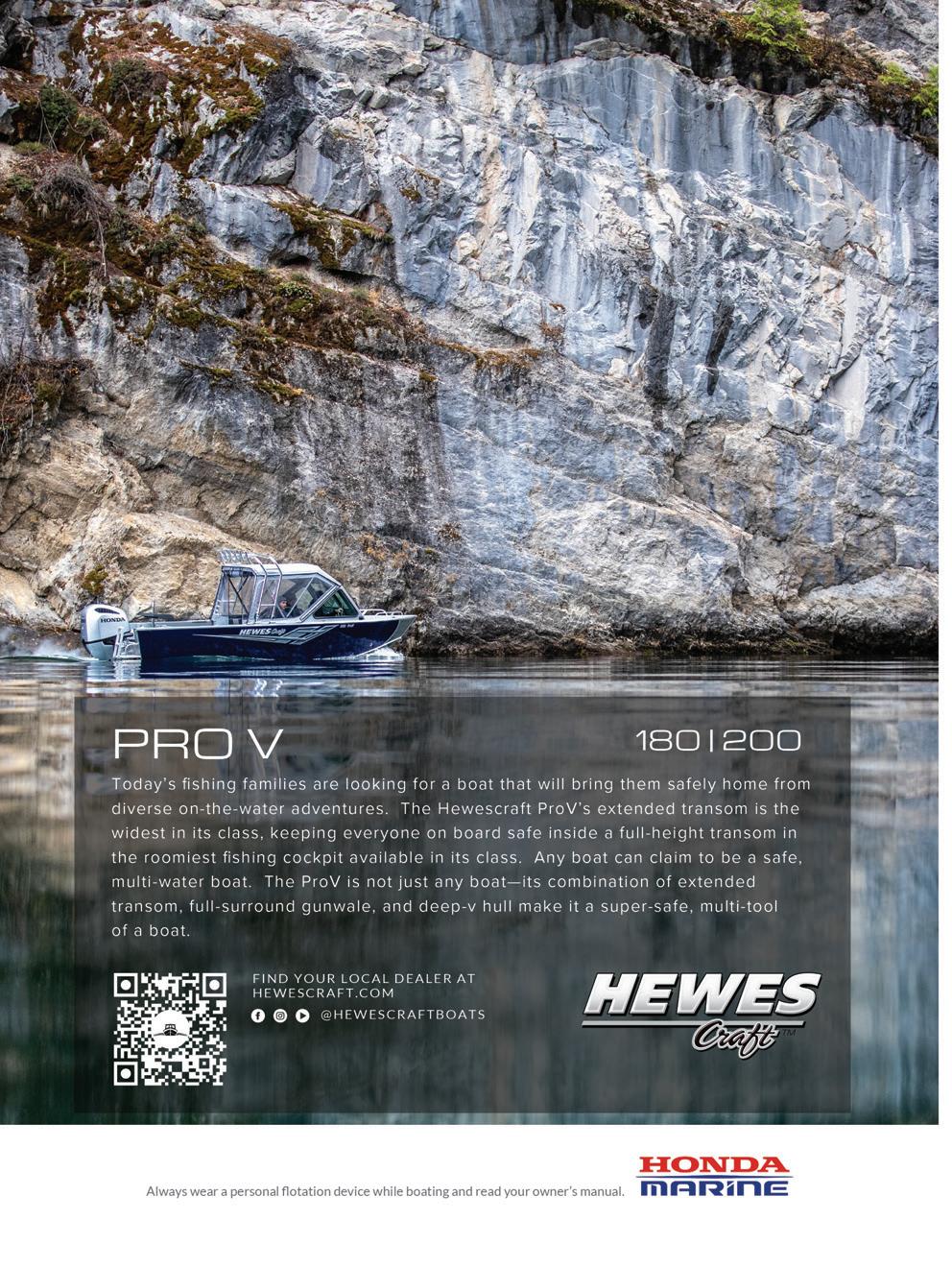
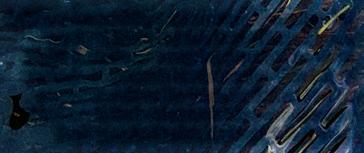

While understandably salmon remain the undisputed royalty of Bristol Bay fish, Daniel Ritz was in the region to continue his ongoing quest to catch every native trout species in North America. He released gorgeous rainbows like this Naknek River beauty, but down to the last few casts Ritz was focused on landing an Arctic char. Find out if it happened.
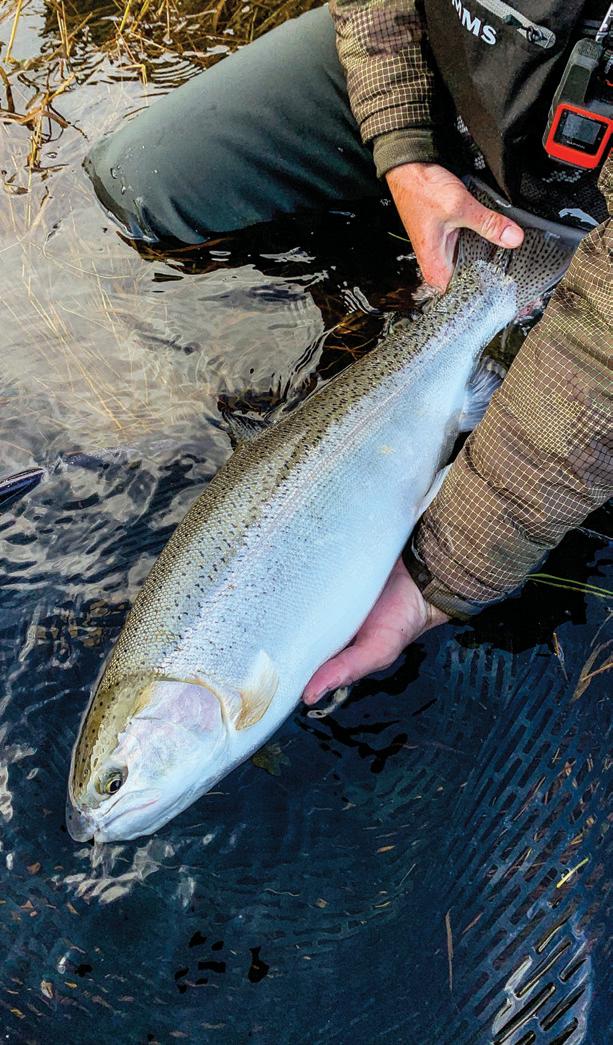
Luke Dihle has three daughters who have enjoyed the outdoors as much as their dad has. We introduced you to Kiah Dihle’s hunting experiences with her father a few years back. Recently it was teenager Braith Dihle’s chance to go on a grueling Panhandle goat hunt with Luke. “My mind started to race as I thought of the possibility of earning my own mountain goat,” writes Braith in her coming-of-age story.
38THE

Don’t be discouraged from taking a solo Last Frontier DIY trip. When his fishing buddies had to back out of what had become an annual Southeast Alaska coho salmon fishing trip from their Pennsylvania home base, our Brian Kelly found himself on his own. But his solo trip was just as exciting as always. It just took a little extra planning ahead of time. How did it all go down – and how was the fishin’ anyway?!?
51 GIVING THE GIFT OF GEAR Hunters venturing into the wilds of the Last Frontier need quality gear to help make their trip a memory of a lifetime. From comfortable clothing that prevents bug bites, to warm boots and waders, to quality shotgun shells, Scott Haugen details the best products on the market if you’re looking for a holiday gift for that sportsman or -woman on your list. And Ti any Haugen – the other half of our From Field to Fire team – whips up crab salsa to serve your party guests.





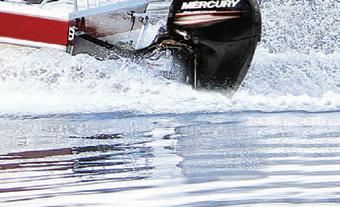
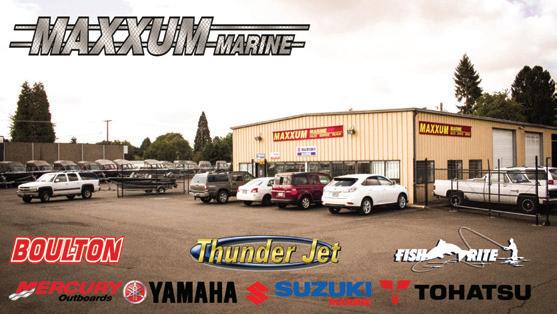



Ihave to admit that I prefer to be with someone whenever I travel. Whether it’s my dog Emma, family members or friends, trips are more fun – if not occasionally stressful –when you can share the adventure.
Still, as Brian Kelly illustrates in his report this month (page 38), having to go solo shouldn’t be a deal-breaker. Extenuating circumstances meant Kelly would be making his usual Southeast Alaska coho trip alone. And as you’ll find out, that was just fine with our correspondent from Pennsylvania.
I too can attest that I’ve had some fun fishing outings on my own. Most of those were day trips close to my home in the San Francisco Bay Area. I’d just throw in a lawn chair and some gear and fish from the shore at one of my local lakes. It was a chance to clear my head, maybe bring along a magazine and, on a good day, catch a few rainbows.
Later on, I did some trips without a companion, usually somewhere in the U.S. (and Canada, when I spent a memorable few days in Toronto, which remains one of my favorite cities). It’s indeed refreshing to be on your own schedule. If I see a restaurant or museum I want to check out, there’s no worry about whether whoever I’m with has other ideas in mind!
I’d love to plan a long fishing trip like Kelly did. His DIY approach worked great, as he planned ahead of time, chose to make Petersburg his home base after some thorough research and found a honey hole around Blind River Rapids that allowed him to bring a lot of coho filets back to his loved ones.

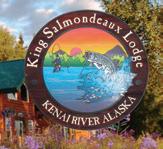
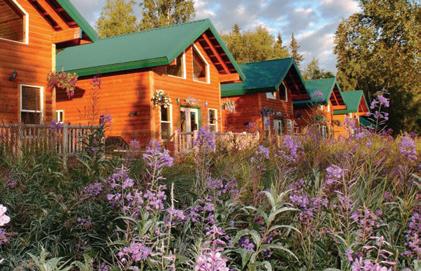
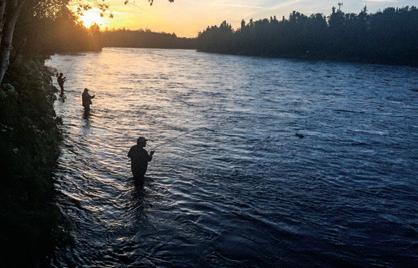
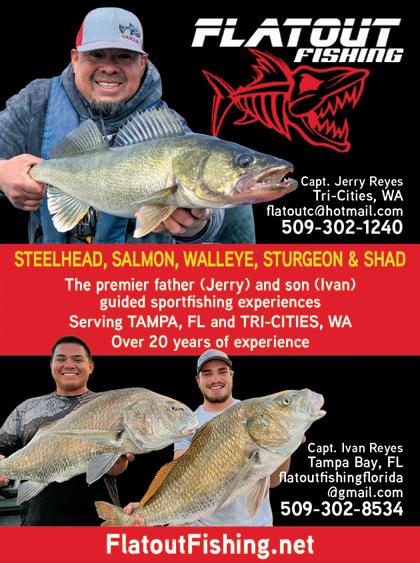

well, thanks to his perfect planning. It’s the kind of DIY success story that has inspired the editor to do something similar in the future.
As for me, I want to plan a solo trip to a foreign country someday and see how that works for me. I just had a wonderful trip to Germany and the Czech Republic with my sister and her husband. During our time in Prague – my second time there – I did my best to show them my favorite spots in that beautiful city.
My first visit to Prague? I eventually met a friend there, but I was alone to fend for myself the first couple days, which was a challenge for me because at the time I was an inexperienced solo traveler. I struggled with everything on that first day, from getting lost finding my hotel to going to a pub next to my lodgings that didn’t accept credit cards. Of course, I didn’t bother to take out Czech money at the ATM and was too jet-lagged to find one.
I’m a lot better at these things now, and Kelly kicking ass doing it his way in Southeast Alaska inspires me to do the same. -Chris Cocoles

Our remote Alaskan fishing lodge is situated on the upper stretches of the beautiful Egegik River. You’ll watch some of Alaska’s most stunning sunrises, complete with a distant, active volcano. We are a fishing camp specializing in coho fishing, brown bear viewing, and flyout fishing adventures to even more remote destinations in the Last Frontier.




The Egegik River is touted by many experienced anglers as the best silver salmon stream in all of Alaska. Becharof Lodge On The Egegik River was the first fishing lodge to become established on the breathtaking Egegik River, and is less than a 5 minute boat ride from some of the best fishing holes on the entire river.




Included in your fishing trip:
• 5 days fishing/5 nights stay in camp
• Experienced, fully guided fishing.
• Comfortable cabins furnished with beds, cozy comforters & bedding.
• Home cooked meals, snacks, and nonalcoholic beverages.
• Transportation from the lodge to prime fishing holes on the Egegik River.
• Freezing and vacuum sealing of your fish, up to 50 lbs., per angler.

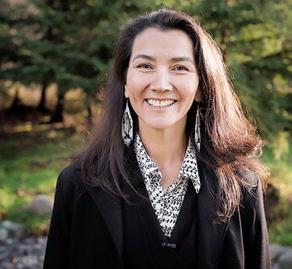
In a contentious midterm election that saw Republicans win the U.S. House and Democrats hold onto the Senate, Alaskans who are concerned about the precarious salmon runs in the state and the still unresolved threat of the Pebble Mine made their votes count.

After ranked-choice voting results were calculated, two incumbents who are thought to be the best options won re-election. Republican Senator Lisa Murkowski held o a challenge from another GOP candidate, former President Donald Trumpendorsed Kelly Tshibaka, while Alaskan Native and Democrat Mary Peltola, who won a runo election in the summer to serve the remainder of the late Rep. Don Young’s term in the state’s lone House seat, defeated former Alaska governor and vice presidential candidate Sarah Palin.
In what was known as the “Salmon Slate” endorsements, many organizations saw Peltola and Murkowski as the best possible Congressional candidates regarding policies to help the state’s fisheries. The Murkowski-Peltola combination was being hailed as the “Fish Ticket” as votes were being tabulated.
“Turning out to vote for the Salmon Slate is the most important way people can take action to help protect Bristol Bay's prolific salmon fisheries and our Indigenous ways of life,” United Tribes of Bristol Bay executive director Allanah Hurley said. “The Salmon Slate endorsements highlight the candidates who will work to stop mines like Pebble in our region and to secure permanent protections for generations to come.”
Peltola frequently tweeted the need to protect Alaska’s fishing industry as she campaigned. “Without our fisheries, Alaska just … isn’t Alaska. To preserve what makes our state great, and preserve our Alaska way of life, they have to be saved,” she posted on Nov. 27.
Murkowski, unlike Gov. Mike Dunleavy, who easily won re-election, has been opposed to the Pebble Mine project, a stance that would endear her to Bristol Bay residents and many others who have called on the Environmental Protection Agency to permanently protect Bristol Bay from mining projects.

Rick Halford, senior advisor to Alaskans for Bristol Bay Action and a former State Senate president, called the Murkowski and Peltola wins and proclaimed, “We have a lot to celebrate.”
“Lisa Murkowski and Mary Peltola’s wins are a victory for voters and for all of those who rely on Bristol Bay to sustain their way of life. This election proves that when you stand for people, jobs, and fish, you win,” Halford added. “Across party lines, people want champions in Congress who will fight for durable, long-lasting protections for Bristol Bay. I look forward to seeing Lisa and Mary stand up for Alaskans in Washington, D.C. and work together to ensure that Bristol Bay – an irreplaceable resource for Alaskans, our economy, and way of life – is protected for generations to come.”
This moose showed up to the local voting site to protect democracy in Alaska.

Despite finishing with a much smaller harvest in 2022, increasing prices for chums helped thrust the overall Southeast Alaska commercial salmon value to $144 million, $12 million more than 2021.




Bill Leacock and Dustin Rose spot bald eagles perched among cottonwoods, streams filled with spawning sockeye and a young bear frolicking along the water’s edge. But no Broken Ear. The sow got the name because “her right ear was evidently torn in a fight with another bear at least 13 years ago, at least since I’ve known her,” Leacock says. “Her right ear is barely hanging onto her head by a thin piece of skin about half an inch wide.”
Leacock has been around these bruins for so long he knows several of them by name, and he’s been an acquaintance of Broken Ear since first spotting the sow in 2006.
On this day, it doesn’t appear that he’ll reunite with the old gal on this outing as he and Rose cruise back toward Camp Island after their surveying is complete.
But then it happens. “I see her right there,” the intern says as he peers over from the port side of the ski into the brush. Sure enough, Leacock recognizes the animal right away.
“Yep. There she is,” Leacock proclaims as Broken Ear emerges from the bush. “She stood up and as if to say hello.”
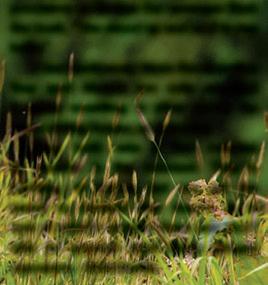

A few yards away down the shoreline they spot Mom’s two cubs engaged in some wrestling; in other words the usual sibling horse-, er, bearplay.
They both take a few minutes to breathe in the moment. They’re working, of course, but you get the sense on camera that they’re as in awe of what’s around them and don’t take for granted what these refuges represent. -Chris Cocoles
“
“We didn’t just kill them for denning under decks. That was the final issue, but it was the progression of their behavior ... The sow was just getting so comfortable around humans. I was concerned because I could probably walk up to within 10 feet of her, and she’s not showing any fear.”-Alaska Department of Fish and Game biologist Dave Battle to Alaska Public Media News, after a sow and her three cubs were euthanized for concerns the bears were getting used to being around East Anchorage residents. The bears of Kodiak National Wildlife Refuge were among the stars of an Animal Planet series, Into Alaska. (LISA HUPP/USFWS)
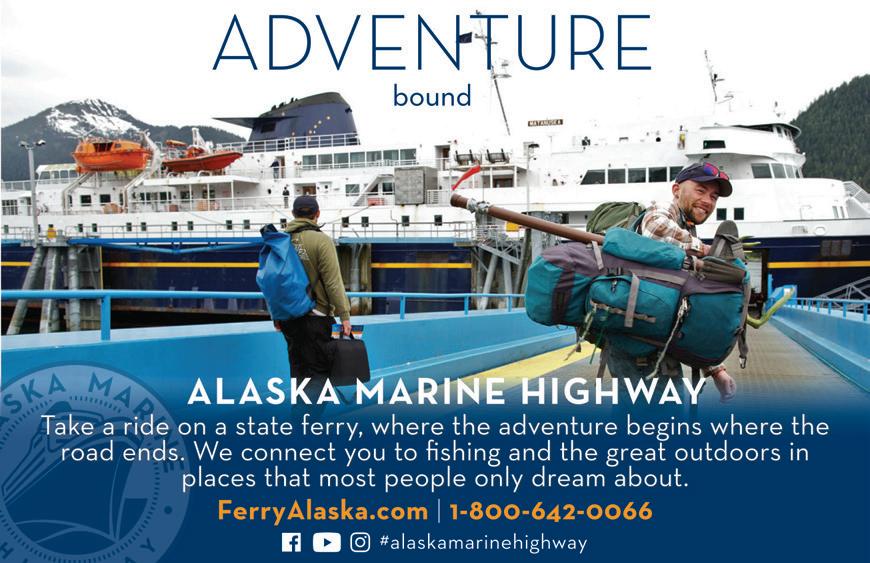



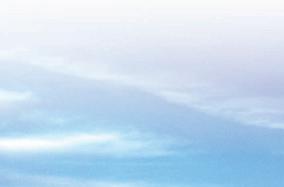




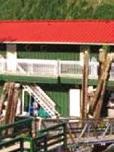
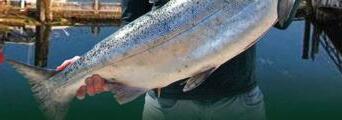
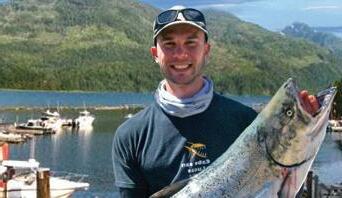
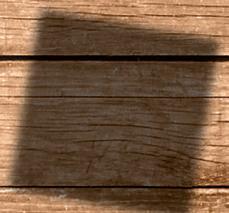



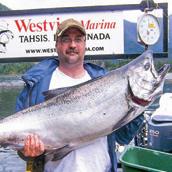


















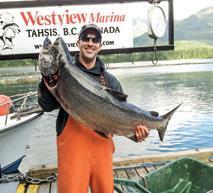




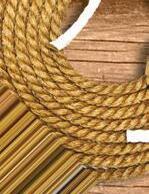


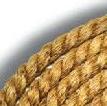


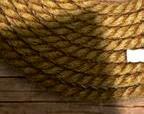





Several moose seasons, primarily for residents only, will be opening up in December in various game management units. (MELISSA GABRIELSON/USFWS)
Dec. 1 Wolf season opens in Game Management Unit 2 (Prince of Wales Island)


Dec. 1 Resident antlered bull moose season opens in GMU 9C (Alaska Peninsula; Naknek River drainage)
Dec. 1 Resident antlered bull moose season opens in GMU 9E (Alaska Peninsula)
Dec. 1 Caribou season opens in GMUs 14A and 14B (Mat-Su Valley)
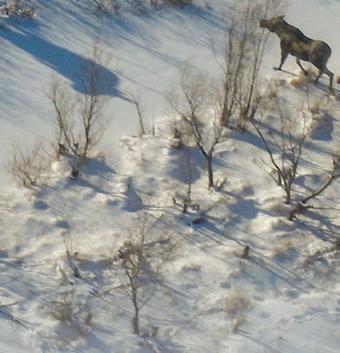
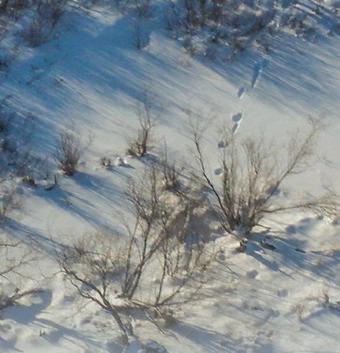


Dec. 1 Resident anterless moose season opens in GMU 14A (Mat-Su Valley)
Dec. 1 Moose season opens in GMU 18 (Yukon-Kuskokwim Delta)
Dec. 1 Antlerless moose season opens in GMU 20B (Fairbanks-Central Tanana, within Creamer’s Field Migratory Waterfowl Refuge
Dec. 1 Resident moose season opens in GMU 20F (Fairbanks-Central Tanana, Yukon River drainage downstream from but not including Hess Creek
drainage and excluding Tanana River drainage)

Dec. 1 Resident bull moose season opens in GMU 25B (Upper Yukon)
Dec. 15 Last day to apply for 2023 draw hunt tags
Dec. 15 Resident antlered bull moose season opens in GMUs 9B, 9C and 9D (Alaska Peninsula)
Dec. 15 Various moose seasons open in GMU 14 (Joint Base Elmendorf Richardson Management Area)

Dec. 15 Resident moose season opens in GMU 24B (Koyukuk; within the Kanuti Controlled Use Area) Dec. 31 Brown bear season ends in GMU 1 (Southeast Mainland)
For more information and season dates for Alaska hunts, go to adfg.alaska.gov/index.cfm?adfg=hunting.main.
Note: Check with local contacts on events that could be postponed/ cancelled due to COVID-19 pandemic.



Growing up in Alaska, my family has always been involved with the great outdoors.
My grandfather taught my dad and uncles how to hunt and kept them busy with fishing and other wild activities. My dad gave my two older sisters and I the choice of whether or not we wanted to participate in such adventures. I chose to do so and have been fortunate to go on multiple hunting trips, as well as countless fishing and hiking outings.
Goat hunting is special to our family and to my dad in particular. At 20 years old, Dad went on his first goat hunt with his brother, Bjorn, and another close friend. It was important to him that me and my sisters each got to experience our own goat hunt. Each of our adventures were di erent and significant in their own ways. In the fall of 2022, when I was 14, I went on my first mountain goat hunt. I was following in my older
sisters’ tracks, both of whom made their own goat hunt with our dad when they were similar ages. It was my turn.
MY DAD AND I left in mid-September on a rainy and foggy morning. I was feeling downcast, as the idea of spending a week sitting in the wet alpine was not very enticing. We boarded a ferry out of Juneau to a small outlying community. Rain spun sideways along the deck and I watched the whitecaps pass by from atop the boat. As we drew nearer, my mind started to race as I thought about the possibility of earning my own mountain goat.
We disembarked from the ferry and drove a short way before parking along the side of the road. After checking that we had all the essential supplies and tools, my dad and I started up the mountain. The light rain wasn’t hard enough to require a jacket, so we trekked up in our T-shirts.
The fog was rolling in and out lower on the mountain and at about 2,000 feet we crossed into a barrier of solid white. Visibility was practically nonexistent, but my excitement hadn’t worn o yet.

We set up camp at 3,200 feet and changed into warmer clothes. I arranged the tent as my dad left to stash our food. We lay in our sleeping bags, listening to the crying of the wind before getting up a while later to prepare dinner. I slurped down my freeze-dried chicken and rice and felt like I was stu ed inside a giant ping pong ball surrounded by all white. After 45 minutes of staring into the abyss, we headed o to bed.
THE NEXT MORNING, WE woke up early and were greeted by fog once again. I thought of my sister, Adella, who last year had spent most of her goat hunt in the fog. She and my dad spent multiple days waiting for a weather window, occasionally hiking out along the ridge to watch the fog roll by. They were snowed on and had extensive amounts of wind and rain. I slipped into my sleeping bag and lolled o for a short while.
My dad and I took turns throughout the day looking out of a small opening in our tent into the endless white. Rays of sunshine occasionally peeked through, and I hoped desperately for a clear patch. In the late afternoon, we were discussing whether or not we should drop down
some elevation to try to get below the clouds. I was hesitant to go bushwacking that late in the day, and my dad agreed that it would be a tactic we’d reserve for later in the hunt. But since we had stayed in our tent all day, we decided to go out and stretch our legs.
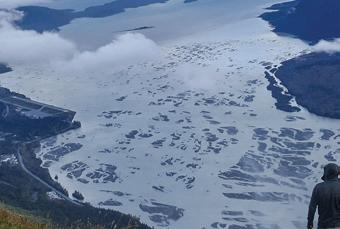
A few minutes after emerging, blue sky peered out above us and the adjacent mountain was clearly visible as the fog to the east started to shift away. We looked up the ridge, which was clear enough to see part way up, and rushed to grab our packs and gun.
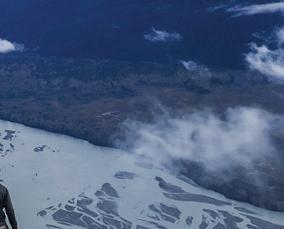
I felt exhilarated as I trailed behind my dad and tried to make my steps as quiet as possible. We hiked up to 3,700 feet before cutting o to the left of the ridge. While traversing the uneven slope, I gazed around in awe at the beautiful Alaskan wilderness. The alpine was filled with the red and orange colors of fall.

“Do you see that spot over there?” my dad whispered, pointing to a vague area. I nodded and peeked over his shoulder to get a better look. “That is where Kiah (my oldest sister) shot her goat.”


I smiled as we pressed on through the haze and crossed over a small section



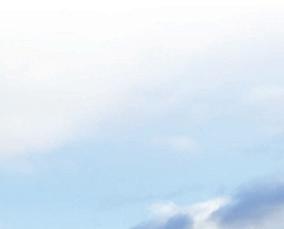



of rocks. My dad bent over and picked up a tuft of goat hair, placing it in my hand before walking on. I tucked the fur into my backpack pocket for luck and raced to catch up. We crested a small slope before abruptly stopping. I heard a strange sound: the whispering of shaking fur and falling rocks. Whipping my head around, I spotted the o -white hair and black horns of a goat dashing out in front of us. I would later tease my dad that I saw the goat before he did. I dropped down as fast as I could, slinging my pack in front of me to use as a rest. My dad hastily handed me the gun and I peered through the scope as the goat crested the knoll, pausing to glance back in our direction.
“It’s a billy,” I breathed, looking at the slow curving of the horns and thick bases.
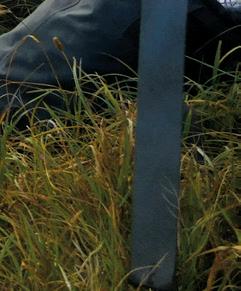

BEFORE COMING ON THIS hunt, my dad had taught me the importance of trying to shoot a billy over a nanny. While killing either is legal, not shooting a nanny can help the goat population considerably in the long run. Nannies start mating when they are 4 to 5 years old; they tend to only give birth to one kid at a time. This can make the mountain goat population vulnerable, which is why I believe it is important to try and shoot a billy.
I shoved the gun at my dad to confirm that I was correct. He examined the goat before handing the gun back over.

“Yep, it’s a billy. It’s your shot,” he whispered.
I took a deep breath and settled the gun on my pack. I lined the scope up, my finger shaking on the trigger. My dad whispered encouraging words as I took

With the fog thickening, Luke gets to work processing

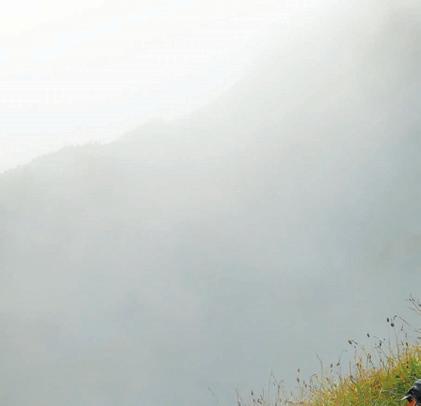
“At 20 years old, Dad went on his first goat hunt with his brother, Bjorn, and another close friend,” Braith writes of her pop Luke. “It was important to him that me and my sisters each got to experience our own goat hunt.” (LUKE DIHLE)daughter Braith’s billy. (BRAITH DIHLE)


another quick breath. The goat started walking and I followed it with my gun, pressing the stock of the rifle against my shoulder. The goat turned again and gazed back, the wind blowing steadily in our faces and not giving away our scent.
With one last movement, I found the shoulder and squeezed the trigger. The goat jumped up in the air, stumbling a few feet before disappearing behind the edge of the ridge. I looked over at my dad, then we gathered our packs and prepared for the upcoming search for the goat.
We scrambled over a boulder field to where the goat disappeared and peered down the hillside. The goat was crumpled on the steep slope – only yards from an intimidating cli . “Congratulations,” my dad smiled, then gave me a high five. “You just got your first goat.”
I was elated and smiled as we slipped down the mountainside and set our packs down on a flat spot before assessing where we should move the goat. Clipping on crampons, my dad and I set to work dragging my goat to a safer
place to process.
After securing the goat, we got our gear and started cutting up the animal. I have been a part of several Sitka blacktail deer harvests but never a goat.
I watched my dad carefully as he taught me how to properly clean the animal in order to collect as much meat as possible. I stopped a few times to gaze at the mountains around me as the fog started to close in and the sun began to dip below the horizon.
We assembled our meat into game bags and began our hike up the steep alpine rise. The sun had gone down and the fog settled low on the mountains, which made it hard to see where we had come from.
I watched nervously as my dad used his compass to find our way back to camp. I breathed with relief when we arrived at our campsite. The goat’s meat and horns were placed away from our tent so as not to attract bears. We celebrated the day with Snickers and gummies while preparing dinner. My dad fried up the goat’s heart in the Jetboil
and threw it into our freeze-dried meals.
THE NEXT MORNING, WE gathered our gear and meat and said goodbye to the mountain. As we hiked down, the leaves from deciduous trees littered the ground and a cool autumn breeze whistled by.
I thought about my sisters and what they had experienced on their goat hunts. I felt so lucky to have the opportunity and was thankful for the goat meat. We reached our car safely and gazed up at the mountain. About 15 goats dotted the slope above, milling around on the lower parts of the cli s.
I watched my dad as we packed up and wondered how he had felt after he shot his own first goat. Even through the fog and rain, there was no doubt that our time on the mountain was gratifying and memorable. Now I understood why he loved goat hunting so much. ASJ
Editor’s note: Braith Dihle’s older sister Kiah wrote about her own hunting experiences in the July 2016 issue of Alaska Sporting Journal.

“I thought about my sisters and what they experienced on their goat hunts,” Braith writes about her goat hunt, which follows a family tradition experienced by her sisters. “I felt so lucky to have the opportunity and was thankful for the goat meat.” (LUKE DIHLE)

On day four of a one-week stay on the Naknek River just outside King Salmon, a new set of storms rolled in.
I had come to Bristol Bay in hope of connecting with an Arctic char, the last of the 22 native trout and char species I had pursued over seven months in 2021 while documenting the populations and conservation of the United States’ iconic native salmonids (Alaska Sporting Journal, August 2021).
The iconic char had bested me the year prior, and now, as days passed and storm after storm prevented us from accessing the rivers holding this elusive species, it felt as if my opportunity was slipping away yet again.

FOR DAYS, AS RAIN poured and the sun rose and fell fully behind clouds as if in a room with shades blocking all the windows, I tried to remain patient. I was tightly wound, mentally struggling with my gratefulness to be enjoying one of the most intact, functional ecosystems in the world, but all the while knowing I had come with a goal, and the window of success for it was narrowing.
This time around, as these fish were
beyond my reach – logistically and skillfully – I enlisted the assistance of the guides at Bear Trail Lodge, owned, operated and managed by Nanci Morris Lyon (907-2462327; beartraillodge.com).
Each day, I fished with various graduates of the Bristol Bay Fly Fishing and Guiding Academy, or BBFFGA. The organization (bristolbayriveracademy .org), which was started by Lyon, Luki Akelkok and Tim Troll in 2008, aims to enable Bristol Bay youth to pursue sportfishing jobs in their own communities.
BBFFGA has empowered more than 150 future guides to share local culture and conservation challenges with visitors to the region by training them not only in fly fishing skills, but also customer service, land management, fisheries biology, lodge business management, and more.
“These kids already know. They grow up knowing where the fish are, the way the rivers behave,” Lyon shared, testifying that while her guide sta may not appear the same as others, they are top of class. “I just teach them the easy stu . The stu you can’t teach? They already know.”
Daniel Ritz made it his quest to catch all of America’s native trout and char species, and on the way he landed this nice Brooks River rainbow. But his journey that culminated with the pursuit of a first Arctic char led to a profound realization about the nature of personal discovery. (DANIEL RITZ)

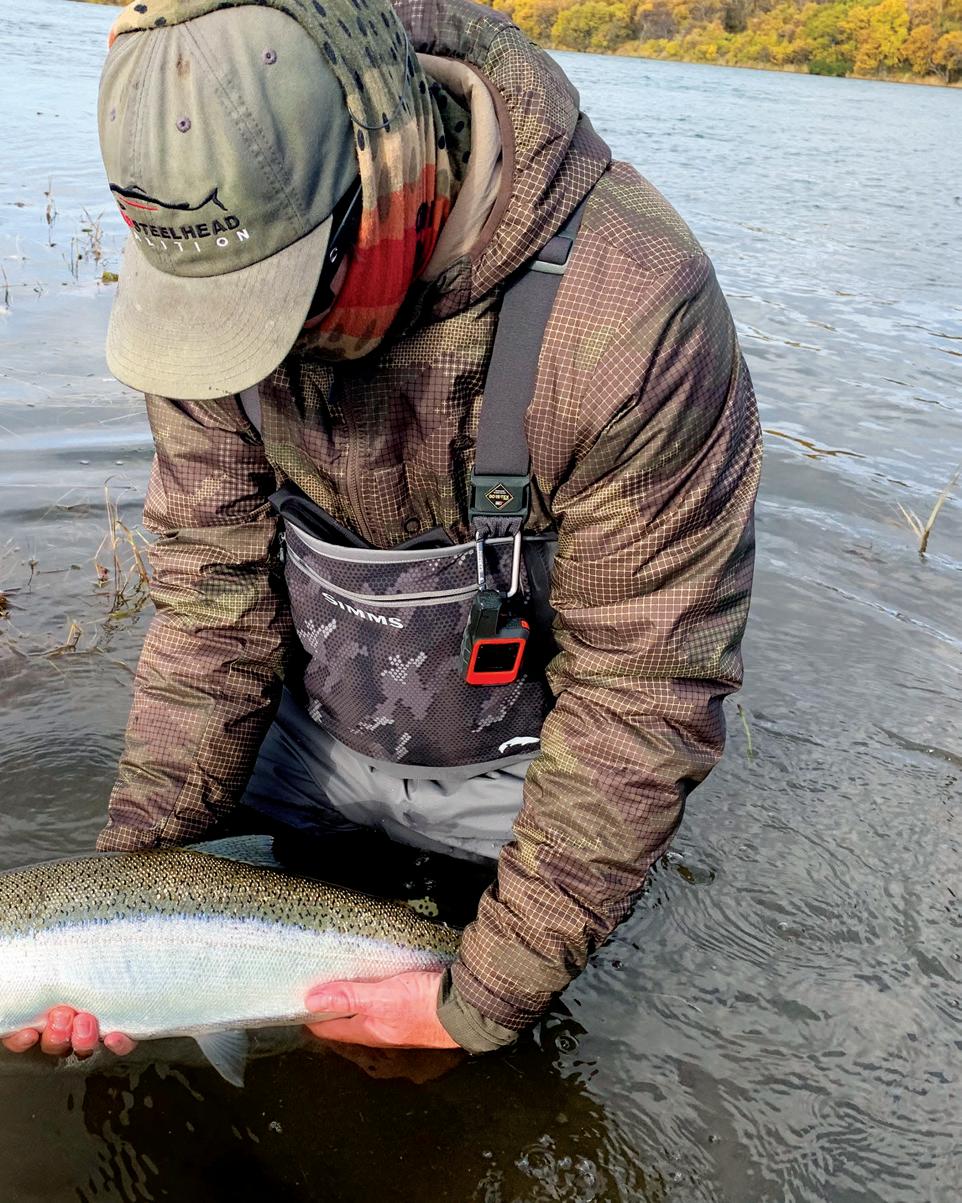


Day after day, we fished for beautiful, girthy rainbows on the Brooks River, got our asses handed to us by hot fish on the Kvichak, Kulik and more. However, with each passing day, the window to connect with Arctic char was shrinking.


At the rate this trip was going, I would need all the help I could get.
MY GUIDE, TRISTON CHANEY, picked up my 13-foot, 4-inch, 7-weight Burkheimer Dpey rod overloaded with T-17 and casually hurled a snap-T cast a country mile across the mighty Naknek.
“Whoa,” Chaney giggled. “I like this thing. I always see guys come here with them, but I’ve never cast one.”
Throughout our days on the Naknek and beyond, the natural talents of Chaney and his academy graduate colleagues resonated loudly.

One particularly tough morning on the Naknek, after six hours without so much as a few smolt coming to our nymphs, Chaney motored us far upstream to an unsuspecting run.

There, Chaney and I howled laughing as my Hardy sang, as on back-to-back casts two nearly 30-inch rainbows latched on to deep, slow-swinging flesh flies and raced through the deep pool.
It wasn’t so much a hot tip, special fly or secret spot that led us to success that day. It was Chaney’s deep understanding
And finally: Success! “Minutes before our pilot warned us we would have to leave to beat the approaching front,” Ritz writes, “the line on my 6-weight pulled taut behind a salmon bed and a heavy tug raced for the river bottom.” (DANIEL RITZ)
of the river and the fish’s behavior.
The unteachables.
Worth mentioning: We didn’t see another boat all afternoon.
EARLY IN THE MORNING of the day before I was scheduled to leave, Lyon informed me that there was enough of a break in the storm that Chaney and I would have one final chance to pursue char that would be following red salmon into their lake spawning beds.
It would be my only opportunity.
I was suspicious of Chaney’s nonchalance as we flew only a few hundred feet o the ground to the river, where we sorted through sockeye for the entirety of the morning session.

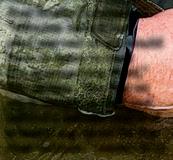

As the day went on, a new wall of clouds erupted on the western horizon,





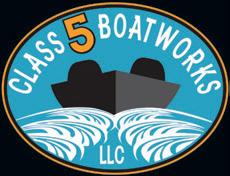
“After releasing the beautiful hen char, I sank to my knees in the river and reflected on the nearly 30,000 miles of travel, dozens of beautiful rivers, hundreds of local river stewards and conservationists I had met along the way, and the hundreds of native trout and char that, to me, are the essence of the West,” Ritz writes. (DANIEL RITZ)
and our pilot signaled that whenever that plume arrived, it would be time to go.
I decided to fish through lunch.
“They’re out there. We’ll find one,” Chaney calmly told me. Either naturally, or thanks to his academy training, he could tell his client was struggling to hold it together.
Minutes before our pilot warned us we would have to leave to beat the approaching front, the line on my 6-weight pulled taut behind a salmon bed and a heavy tug raced for the river bottom.
I won’t bore you with too many exotic adjectives describing the fight and landing of the fish. All things considered, it isn’t important.
After releasing the beautiful hen char, I sank to my knees in the river and

reflected on the nearly 30,000 miles of travel, dozens of beautiful rivers, hundreds of local river stewards and conservationists I had met along the way, and the hundreds of native trout and char that, to me, are the essence of the West.
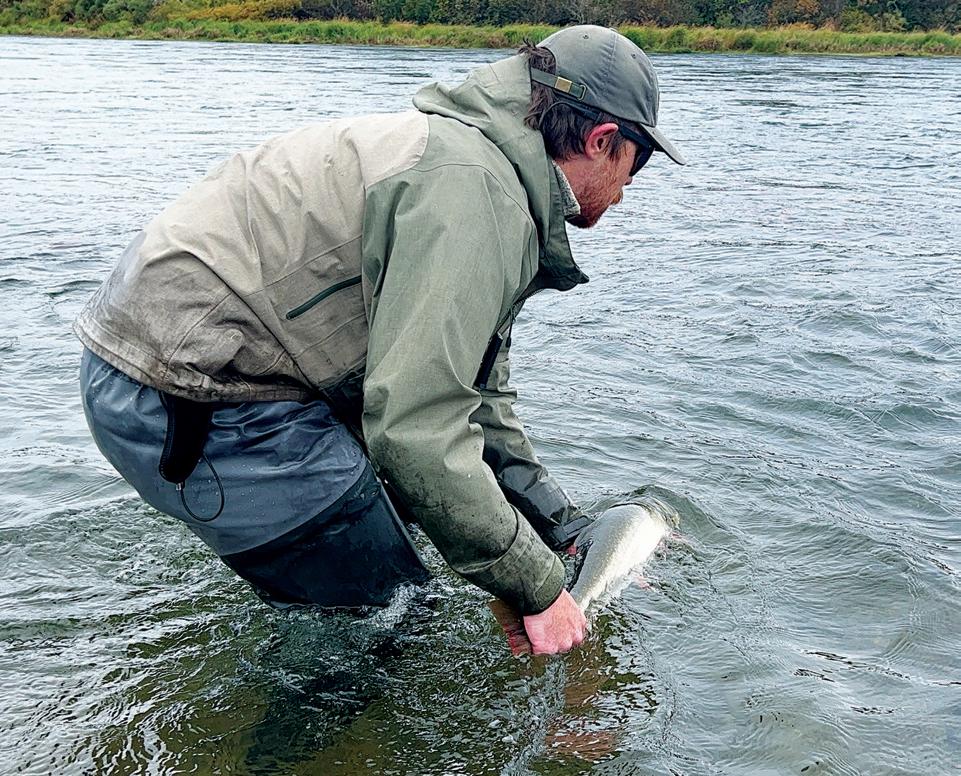
MORE THAN A YEAR ago, I had set out on a mission of discovery. When it was complete, I realized that the true discovery is – with the rarest of exceptions – a facade.
After fishing with Chaney, whose family is Yupik and Athabaskan, and other native and local academy graduates like Kvichak Aspelund, I would walk away with much more than the anticipated sense of achievement.
Fishing with guides who wave to
neighbors, friends and families as we drive the roads to the boat launch and can tell the long history of the rivers and fisheries showed me that my journey to connect with native trout was truly a funnel to recognizing the social, cultural and ecological webs that are inherently entangled in the conservation of native species.
One of the only things I truly discovered was that I wasn’t discovering anything.
It was just new to me. ASJ
Editor’s note: Daniel Ritz lives in Boise, Idaho, where he is the communications and outreach coordinator for the Idaho Wildlife Federation. A catalog of Ritz’s published work, including the entirety of the Western Trout Challenge series, can be found at JacksExperienceTradingCompany.com.




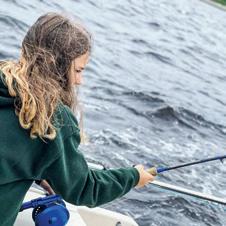

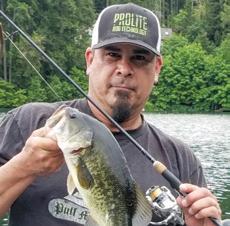
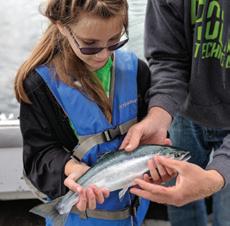




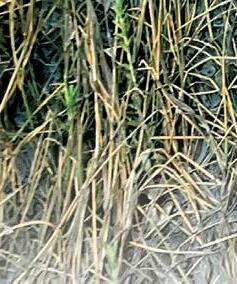


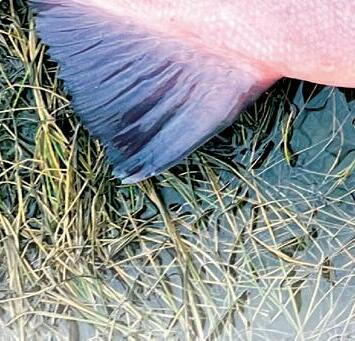
 BY BRIAN KELLY
BY BRIAN KELLY



My annual treks to Alaska start with a planning session among the group of anglers who come along on these trips. Everyone checks their calendars and shares their input on the “where” and “when” the excursion takes place.
This trip was to be my 13th to Alaska, but it soon became apparent that it might become my first solo mission. Some of the group had other trips planned; some had those marriage-type-thing occasions, which were planned well in advance by someone who had no idea that it would
coincide with the coho run.
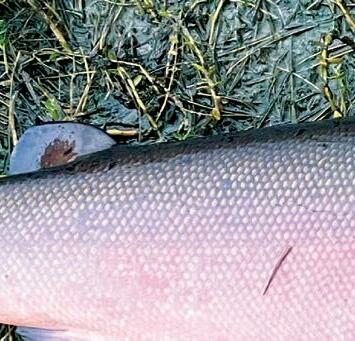
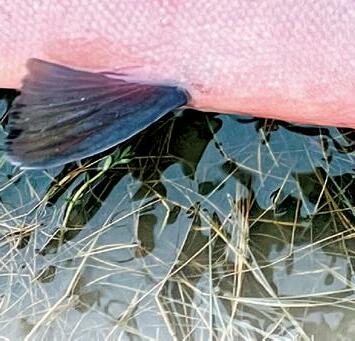
My longtime Alaska travel partner and mentor, Jim Stepulkoski, was dealing with degenerative disc issues in his back and couldn’t make the trip for the first time since we landed in Anchorage in 2011.
However, he did o er some advice:
“You’ve done enough of these trips to the same places we have all been. Find a location, do your homework and test yourself.”

Before Jim first invited me along on these outings, he had done plenty of solo missions to Alaska, doing the legwork
and figuring out the various silver and king fisheries that existed on the road system stemming out from Anchorage.
In recent years, we had branched out from those well-known locales to find some absolute gems in the Alaskan panhandle. One of those gems was
forecast to have a poor silver return, so it became apparent that I needed to stick my neck out and find the next go-to Alaska silver run.

After some searching on the Alaska Department of Fish and Game website – I used their interactive map on the


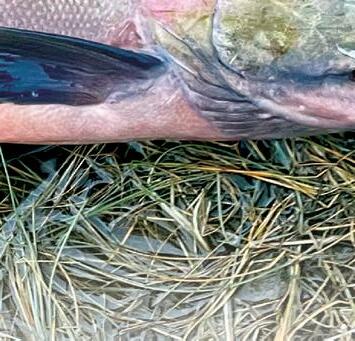



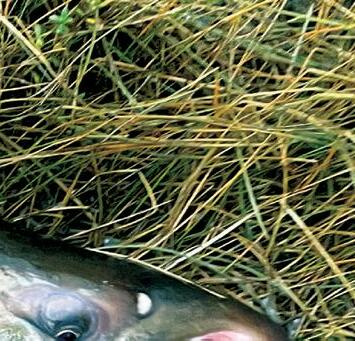
“GoFishAK” link – I came across the town of Petersburg in Southeast Alaska.



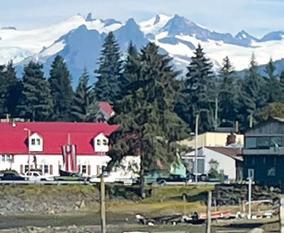



The area checked o the boxes: accessible by Alaska Airlines; rental car availability; lodging; a combination of hatchery and wild fish that show up after Labor Day. After trading a few emails with the local fisheries biologist, I felt confident in my choice and began booking a solo adventure that was to be quite an eye opener.
PLANNING A TRIP WITH a group can get a bit hairy, given all the opinions about the “week we should be there.” At some point along the way, I was left in charge of the booking details. Some years we were early, some late, and others right on time for the peak of the run.
This planning comes with a bit of pressure – mostly self-induced – to get it right and make sure everyone gets their fish and actually enjoys themselves. That is a lot to ask, especially when the fragile male ego is involved.
The trip I was planning to Petersburg was a nice change. I didn’t have huge expectations going in, as this was a new venue. There weren’t weekly fishing reports or social media posts from the local lodges, so I truly was flying blind when I landed in Petersburg.
Getting to Petersburg was like getting to other Alaska Panhandle locations. First fly into Seattle, spend the night and jump on one of the milk run flights the next morning. My plane had a first stop in Ketchikan, and the plane was loaded with groups of other fishermen who would be getting o there and heading over to Prince of Wales Island to either a DIY camp or a fully guided lodge. The flight attendants knew who their clientele was, and kept one overhead bin available “just for fishing rods.” You’ll never hear or see such a thing in the Lower 48!
Upon landing, the majority of the plane unloaded and went o to start their adventures. Then, in true milk run fashion,


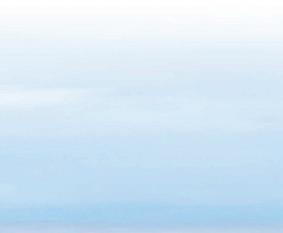

the plane loaded back up – this time with hordes of teenagers and a few adults who looked to be coaches. It was, in fact, the Petersburg cross country team, which was heading home after a meet in Ketchikan, and the Ketchikan swim team, which was on its way to a meet in Juneau. Call it taxi transport, Alaska style!
We then departed for Wrangell, which was a quick flight, for the next round of drop-o s and pick-ups. However, we ended up stuck here for a bit longer than expected. Something in the cockpit wasn’t to the pilots liking, so we went back to the gate for a maintenance check. I have been on plenty of flights when these situations occur; it could be a slight delay or an overnight stay in a small, cramped airport.
We were only 50 miles from Petersburg, and that’s where the local maintenance person was located. So … it was going to be “awhile.”
Of course, the high school kids and their coaches got o the plane and walked to town for snacks, which meant the flight
“The trip I was planning to Petersburg was a nice change. I didn’t have huge expectations going in, as this was a new venue,” Kelly writes. “There weren’t weekly fishing reports or social media posts from the local lodges, so I truly was flying blind when I landed in Petersburg.” (BRIAN KELLY)

Of the many critters Kelly spotted on his trip, deer were omnipresent. (BRIAN KELLY)
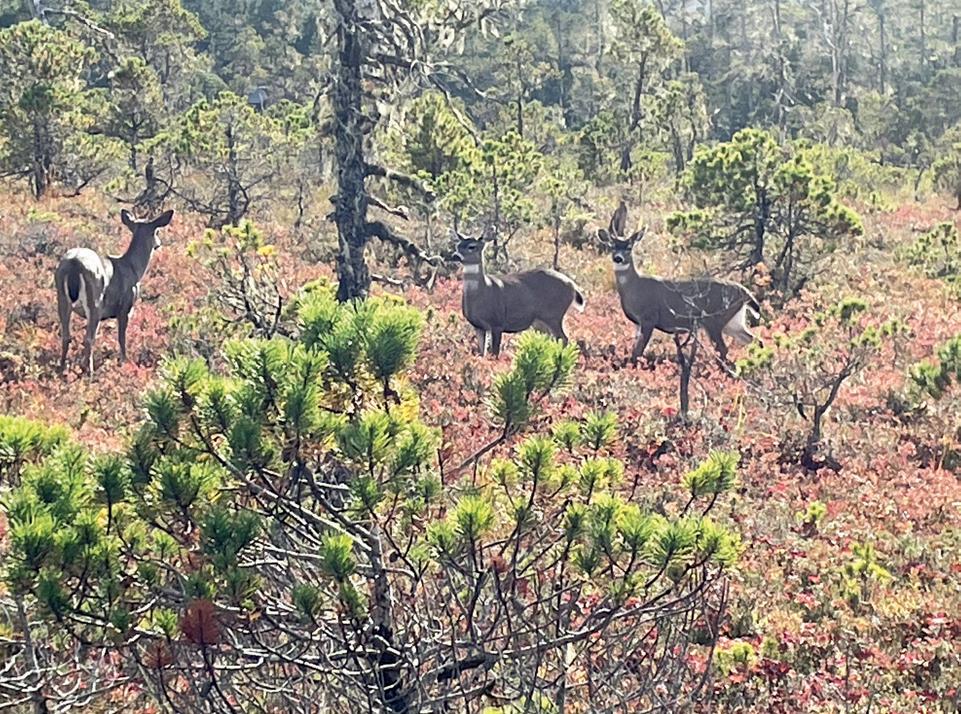
attendants brought out the drink cart for the remaining adults. Nothing soothes an unexpected layover like a cold beer!
It wasn’t looking good, as the maintenance guy was scratching his head while standing at the cockpit door. But the powers that be decided to shut down the power to the plane, then fire it back up (rule number 1 with anything involving electronics). It worked.
Whatever it was, it came back to life, and it was time to load up and head north. I have heard that the flight from Wrangell to Petersburg is the shortest commercial flight in the country; it didn’t disappoint at a whopping 9 minutes from wheels up to wheels down!
While we ended up getting there an hour late, it still left plenty of time for me to get the rental car, grab a few groceries (and a cold six-pack), check in and get my gear together. It was time to see if there were some silvers to be had!
I STARTED OUT AT the Blind River Rapids, which has a spacious parking area and an elevated, wooden walking path that is maintained by the U.S. Forest Service (with no parking fee, which was odd for a federal access point). Once I got down to the river, I noticed the tide was out, as the river below the rapids was quite low, plus there was a long, wide, slow section above the rapids and several anglers standing there with a few fish rolling.
The locals said the water was quite low compared to normal, as they missed the last storms that rolled up the coast. Being accustomed to low, clear water back in my Great Lakes haunts, I dug out a black Arctic Spinner and quickly landed a chrome hen fresh from the ocean; having come in with the high tide earlier in the day, it still had sea lice. In a couple of hours, I managed to put four silvers on the stringer and release a couple fish that were too blush to keep
(local regs allow six silvers a day).
After fileting, rinsing and bagging my fish, I was quite pleased at the start of this trip. It is rare to land in town, suit up and start hammering fish; it usually takes a day or two to figure out the “wheres” and “whens” of the bite. The work never ends on a DIY trip, even more so when you are on your own.
Eggs needed to be cured, as the locals said the egg bite had been the ticket in the low water, and gear packed for the morning. A microwave dinner with a cold Alaskan White Ale awaited my return. This would be the theme for most of the trip.
While the weather was welcomed by the locals, it wasn’t exactly Southeast Alaska silver weather. Instead of the low, gloomy skies with a forecast of rain – or at least a chance of rain – the skies were clear, with abundant sunshine and highs in the 60s. You know; golf weather!

Experience said the best plan would be to fish early in the morning to hook what you could before the sun got on the water, and that is pretty much how it went the first few days. While I wasn’t the first car in the parking lot each morning, it didn’t seem to matter, as the fish were spread out along a large stretch of river above the rapids, so the anglers who were there could also spread out.
It was the same crew most of the week I was there: a couple graybeard locals and a foursome of Utah anglers who were staying at a local lodge. And each day, no matter if the bite was going or not, they all would pack up around 8 a.m. and head out. This meant I had the place to myself, for as long as I wanted each morning.
USUALLY, THE BITE OR I would quit by 10 a.m. I would either have my limit by then or just have had enough of the no-seeum swarms. Since the bugs were so bad with the dry, warm weather, I typically opted to take my fish down the road to a boat ramp area to filet them in relative peace and quiet.
One particular area was some 30
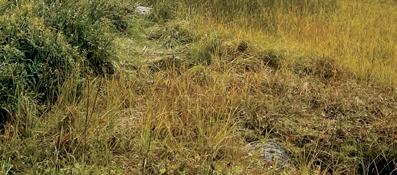

miles out of town, and as with about anywhere you go in Alaska, the further from town you get, the more critters you see. Sitka blacktail deer – lots of them –eagles, ravens, porcupine and black bear were common sights on my daily fish processing run.

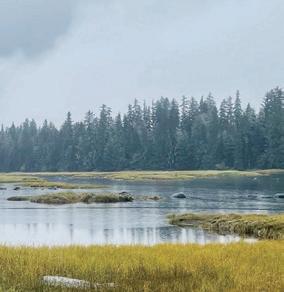



If I timed it right, I would make it back to Petersburg to drop o my filets at the local processor, Cold Storage, and catch lunch at the only restaurant that was open that week. It seems that the town shuts down for a week or two at the end of the commercial fishing season to take a break until hunting season starts up in October. One of the local pizza joints did open up from Friday through Sunday in the evenings, so that meant it was co ee and PBJ by day and microwave dinners with cold beer by evening for most of the week. Such is the life of those a icted with coho brain; fish before comfort!
While the morning bite was spoton for several days, it was becoming apparent that I was running out of fresh fish and dealing with more blush fish. Was this it? I wasn’t disappointed, as I had nearly two full fish boxes of filets after four and a half days on the water.
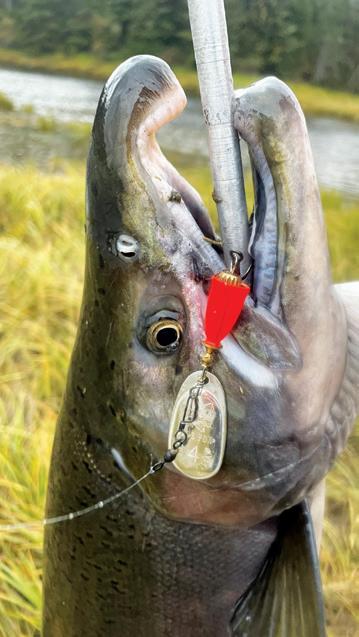

For the on-his-own author, Blind River Rapids was an ideal destination to fish, with plenty of parking and a U.S. Forest Service-maintained wooden walking path down to the river. (BRIAN KELLY)


Not too shabby for a place I had never fished before. As I sat with a cold beer and cigar and pondered the trip up to this point, I heard the familiar sound of a pu of air come from the channel in front of my accommodations. I looked up in anticipation of seeing another seal or sea lion, but nearly fell o my chair when I saw a large, distinct black dorsal fin pop out of the water. Orca! Not only an adult orca, but also a calf swimming right alongside the mother. They showed themselves three times and I managed to get a short video to send to the folks back home.
I was in awe; this was something I had always hoped to see on a trip, and it had just happened. I went to bed that
night with the orca sighting in my head and the welcome sound of rain on the roof. A freshet was coming, and I had two days left to fish.
THE RAIN WAS STEADY as I headed down the road the next morning. This seemed to get the deer fired up, as I had to stop three times along the way as they crossed the road. The parking lot had standing water for the first time all week. Did this indicate that the river was blown out?
The river level was up, but since this drainage flows through a series of sloughs and wetlands, the water gets filtered and only gets a tannin stain rather than become a muddy mess. This morning saw heavy rain pushed by
sheets of wind, or “silver weather” as I like to call it.
The locals and the Utes didn’t stick around long, and boy did they ever miss out! The spinner bite really fired up with the change in weather, as the fish were hot to chase something rather than sni eggs or swat at a hair jig. I had five sealice-laden silvers on the stringer by 9:30 a.m. and I was soaked to the bone! It was time to clean fish, get a warm lunch and head back for the afternoon high tide to see if I could get that last fish for my limit.
When I came back for the afternoon shift, I was greeted by a pair of seals that had followed the silvers in with the high tide. With the tide heights building as the week wore on, the seal twins were
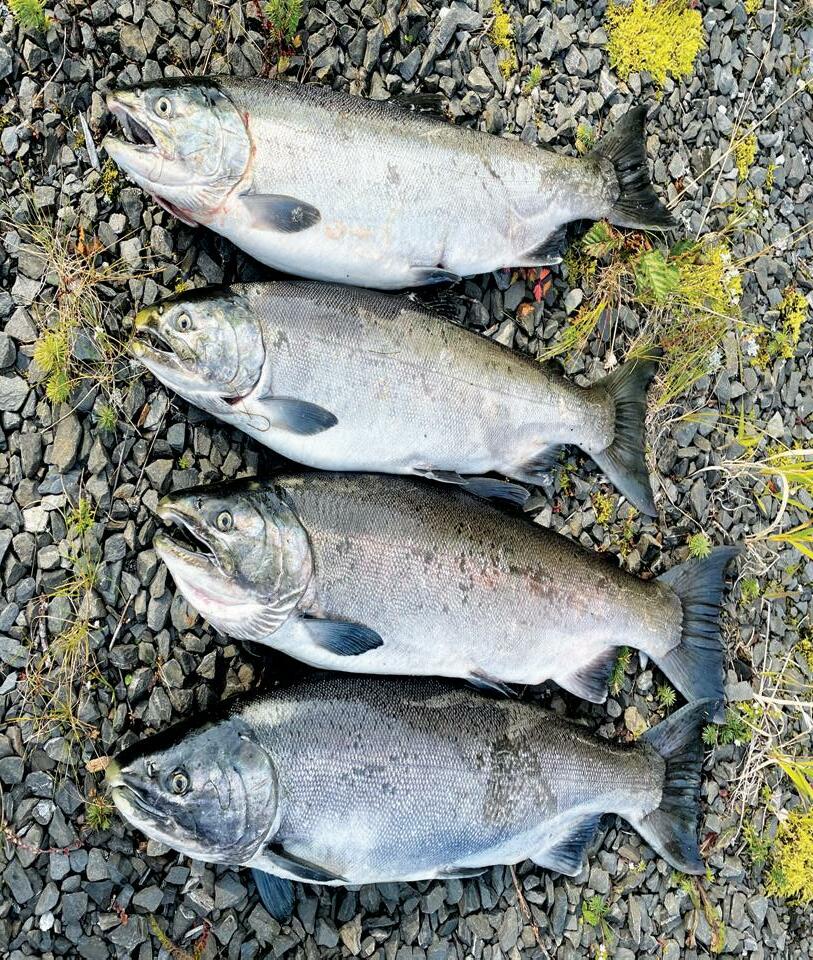










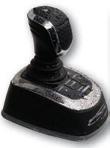

able to get above the rapids and raise hell with the fish in the lagoon I had been targeting all week.
After watching the seal show for about 20 minutes, I figured I better get down to the business of punching my limit and getting out of wet clothes for the day. It didn’t take long. One swing of the silver/orange Vibrax above what was the rapids brought a strike at my feet
“After catching my last fish to fill my limit for the day, I found a nice flat rock to sit on and enjoy a cigar,” Kelly writes. “No other anglers around; just me, the silvers and the chatty ravens.” (BRIAN KELLY)
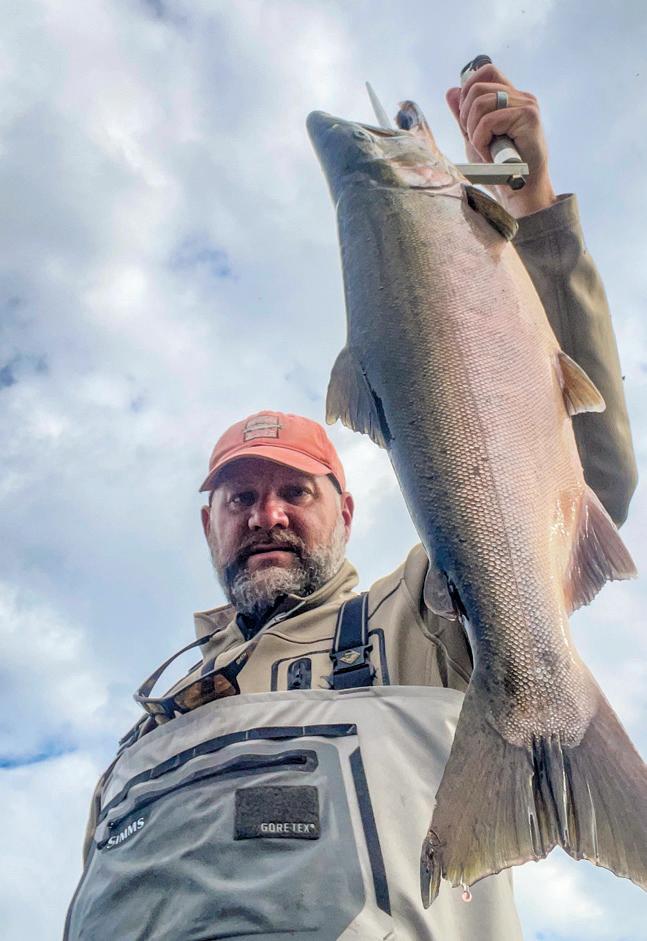
from a fresh silver!
It is amazing how newly arrived fish will chase your o ering until the last possible moment and then inhale it! As I beached the beautiful 9-pound male silver, one of the seal twins popped his head out of the water not more than 20 feet from where I stood. I told him, politely, to find his own dinner. So o he went and did just that – some 20 yards
downriver.
But on this trip I truly saved the best for last.
THE FINAL MORNING SAW clearing skies with cool temps and a river full of fresh silvers from the previous day’s rain and tide. One local was there ahead of me; he was walking out as I came down the trail and proclaimed that the fish had moved up with the high water. Huh? Well, I thought I better walk up to my usual haunt and find out for myself.
The air was still, the river surface was glass calm and as the sky began to brighten, the fish began to move around. They weren’t swirling and jumping like usual, but rather finning and holding, just casting little dimples as they came to life.
I had three fresh silvers on the bank in the first half hour, as twitching a float and jig combo fired up the bite. Then, it dawned on me. Now was the time to try and fulfill a goal of mine – catch a silver on a surface presentation.
Since I am not much of a fly caster, I had brought along a surface plug on a few trips, hoping to make this dream come true. As I began to twitch the plug on the retrieve, a “V” wake made a beeline to the lure. All I could think was, “Don’t stop the retrieve and let him eat it!”
The fish swirled on it once, then came around, opened his mouth above the water line and engulfed the plug! I waited for the tug, set the hook and was shaking like a leaf! “That just happened! Now focus and land this fish!”
When I got the fish to the bank and removed the hook, I tipped my hat to the sky and thanked my deceased mentors who were watching the show from above. Once the fish was on the rope and my nerves calmed, I shrugged my shoulders and said, “Let’s do that again.”
Next cast, the plug went a couple feet before an ocean-bright hen silver exploded on the plug and ripped line. I was in awe! Thirteen trips to Alaska, and now I had just landed back-to-back silvers on a surface plug!
After catching my last fish to fill my limit for the day, I found a nice flat rock to sit on and enjoy a cigar. No other anglers around; just me, the silvers and the chatty ravens. A fitting end to what was an amazing solo mission to Alaska! ASJ

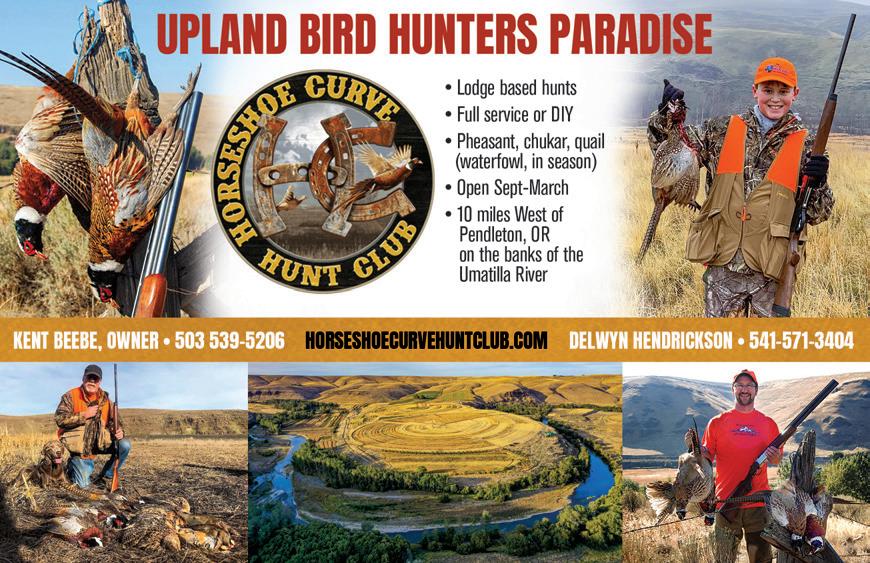
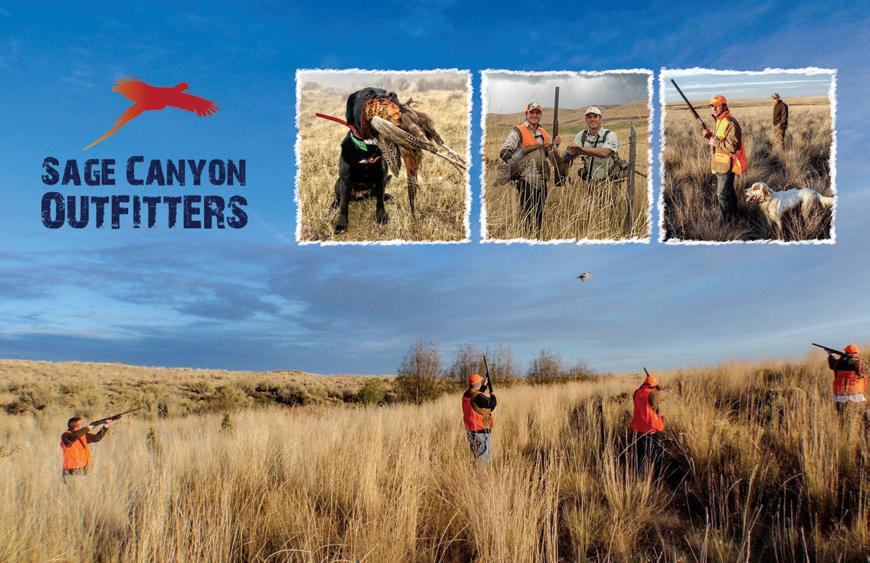



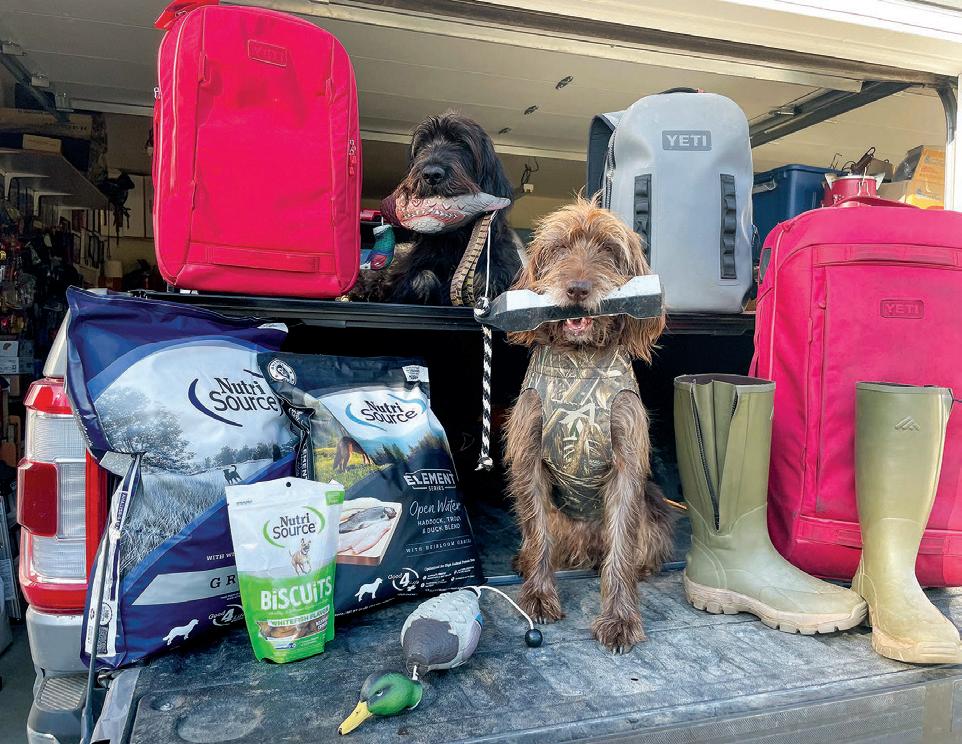 BY SCOTT HAUGEN
BY SCOTT HAUGEN

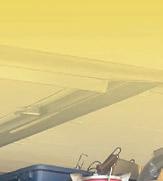

Looking for some last-minute Christmas gifts for the hunter in your life? I’m here to help. This year I spent over 250 days afield, traveled to multiple states and four countries. Here’s a look at some of the best gear I used in 2022 and why I liked it.

Last summer I went to Brazil’s Pantanal to photograph jaguars. The first evening along a river I got nearly 100 mosquito bites through my clothes! The next three days I wore Sitka’s Equinox and didn’t get bit a single time. I also wore it while
spring turkey hunting in Oregon and in Alaska during the summer. I didn’t get one mosquito, no-see-um or white sock bite.
The collection features a hoodie, pants and gloves designed to be worn together to minimize the health risk and distraction of insect bites by preventing
Alaska crab meat – whether Dungeness, king, Tanner or snow crab – has a flavor like no other seafood. Delicate and creamy with the essence of the sea, it almost seems shameful to eat it any other way than straight from the shell after being boiled or steamed. However, there are ingredients that pair so well with crab that all of them are elevated when mixed together.
When we lived in Hyder, Alaska, a couple years ago, we loved feasting on fresh Dungeness from the bay. On hunting trips to Kodiak Island, Scott has brought home king and Tanner crab meat, which we also thoroughly enjoyed. If you have some crab meat stashed in the freezer, the holidays are a great time to dig it out and share with friends and family.

While this crab salsa recipe is almost

entirely crab, the bits of other ingredients added will result in a fresh dish with multi-layered complexity. Please note that the addition of cilantro is optional. If you aren’t a fan of cilantro, you won’t want it in your crab salsa. I like splitting the recipe and adding cilantro to half of it, as neither my dad or father-in-law are fans of the herb. After all, you must keep the dads happy for the holidays.
2 cups cooked, shelled crab meat
½ cup diced cucumber
2 tablespoons diced sweet bell pepper
2 tablespoons diced tomato
2 tablespoons fresh lime juice
Zest of one lime
1 tablespoon diced chives or scallions
1 tablespoon finely chopped cilantro, optional
1 tablespoon extra virgin olive oil


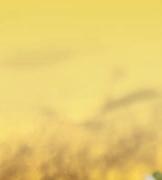
½ teaspoon white sugar
Salt and fresh ground black pepper to taste
In a medium bowl combine cucumber, bell pepper, tomato, lime juice, lime zest, chives or scallions, cilantro (optional), olive oil and white sugar until sugar is dissolved. Gently fold in crab meat and lightly season with salt and pepper as desired. Serve immediately with chips of choice or keep refrigerated until ready to eat.
Before cooking crabs whole, make sure they are alive by poking an eye or antennae. These sensitive organs should move when stimulated. If they appear sluggish, crabs can be renewed by quickly submerging them in cold saltwater. Once the whole crab has been cooked, pry o the carapace, break the crab in half and thoroughly clean it. Make sure to remove the gills and all visceral mass, where biotoxins are harbored.
Editor’s note: For signed copies of Tiffany’s popular book, Cooking Seafood and other titles, including Scott's best-selling book, Recreational Dungeness Crabbing, visit scotthaugen.com.


contact with mosquitos, ticks and other bugs. It works by utilizing a newly developed bite-reduction fabric and infusing built-in Insect Shield treatment.
Each piece o ers UPF 50-plus protection, Polygiene odor-control technology and moisture wicking to keep hunters comfortable in warm and humid conditions. I was amazed with its comfort in the 95-degree daily heat in Brazil.
Info: $448; sitkagear.com.
I wore these boots on multiple deer hunts in wet conditions, fall turkey hunts, waterfowl
hunts, and all fall and winter when running trail cameras, chasing predators, photographing wildlife, and training dogs. I’ve worn and tested many knee boots over the years. These are awesome!
I love the ankle fit and support these o er while maintaining stability and comfort. The tread pattern performs great in a range of conditions, the side zipper is flawless and very convenient, and the insulating neoprene is durable and flexible. Custom insole options result in even more comfort and stability, and they’re quick drying on the inside.
Info: $200; chenegear.com.
I wore four brands of waders on over 100 waterfowl hunts last season –from Alaska to Mexico to Texas – and the LaCrosse Agility Waders were my favorite. They made it into marshes, rivers, creeks and saltwater on over 60 hunts in temperatures ranging from 8 to 75 degrees Fahrenheit.

The boots in the Agility Waders are very comfortable; I was a four-sport athlete in high school and played a bit of college ball, and quality footwear is high on my priority list. The waders are easy to get in and out of and I love the zipout liner, which o ers plenty of warmth in temperatures below 20 degrees Fahrenheit and is easy to remove on warm days. The breathable nylon upper was ideal on long hikes and very comfortable.
A waterproof tech pouch kept accessories dry, and I liked the shell loops and multiple comfortable pockets up front; I love places for my hands. On several days I spent 12 hours or more in these waders and they always delivered.
Info: $550; lacrossefootwear.com.
I’ve traveled to some 40 countries and appreciate good luggage. This year I used Yeti’s Crossroads luggage and can’t say enough about its durability and performance. It took a pounding in three countries and multiple states, got rained on, dragged through mud and sand, and laid in the snow, yet everything was dry and the zippers, wheels and extending handles kept working!
The multiple interior compartments are very e cient, allowing a surprising amount of gear to be tightly packed. The zippers are tight but never let me down, even when excessive pressure was applied. The accessories compression bags are more than worth it.
The Panga Backpack hauled tens of thousands of dollars in camera gear in remote Alaska, Canada, Mexico and South America, and held up in the heaviest of downpours. If you’re a serious traveler, this luggage is a must!
Info: $300 and up; yeti.com.
I use a lot of di erent duck and goose decoys, but one of the most e ective








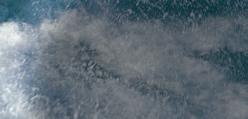
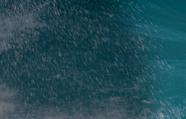



and a ordable has been Big Al’s silhouettes. Last season I used the Wigeon Pack decoys on over 50 hunts and had incredible success, taking many ducks and multiple species as they backpedaled into the spread.
I’ve hunted over the Brant Shore Pack many times in Alaska, but for the first time in Mexico earlier this year. Set on the edge of the tidal flats, brants flocked into the silhouettes in Mexico just as they do in Alaska. These silhouettes are very realistic looking, don’t glare, are easy to clean, and they simply work. I look forward to using more of Big Al’s silhouettes.

Info: $72 and up; bigalsdecoys.com.
Last year I used this extensively in 12-gauge, 3-inch No. 2 shot. It’s one of the best performing shotgun shells I’ve used. The pattern is impressive, the powder and primer burn very clean, and it's extremely e ective at long range on both ducks and geese.
I shot other brands that cost three times the price of a box of SpeedShok, and I’d not hesitate using these anywhere on any birds – even eiders in Alaska. It has great penetrating power without ripping apart meat. I’ll be using
it again this season.
Info: $23.99; federalpremium.com.
Let’s not forget our dogs this holiday season! Quality dog food for your hunting pup is one of the most neglected items by hunters. We spend a lot of money and time on our hunting companions, so why not invest a bit more to make sure they lead a healthy, comfortable and longer life?
For years I’ve been feeding my 6-year-old male gun dog NutriSource dog food, which o ers compact nutrition and pre- and probiotics. My 8-year-old female pudelpointer gets the NutriSource Element Series, which contains up to 90-percent protein. Both of their recovery times are fast and joint pains gone with these quality foods; their stools are much smaller and fewer, meaning digestion is optimized.
And don’t skimp on treats. A buddy lost a month of hunting after his Lab reacted negatively to a poor-quality treat he ate at a gas station this fall. I use NutriSource Biscuits, which are meat-rich, protein-dense and made with real fruits and vegetables. These foods seem pricey, but you actually feed less each meal.
Info: nutrisourcepetfoods.com.
This summer one of my dogs started getting lazy in the water and retrieved bumpers by barely gripping the end. Enter the Avery Sporting Dog PerfectHold HexBumper. The dumbbell design with enlarged ends forced my dog to gain the proper grip and hold, which carried over to our bird training and future hunts. It comes in three colors and is priced at $10.99.
I was also happy with Avery’s EZ-Bird Pheasant with tooth-lock features for a solid hold, a puncture-proof skin, a soft floating head that won’t break teeth and a sight/scent tail streamer for focused marks. The realistic paint and anatomically accurate design made training more fun and exciting for my dogs. I’ll be getting more of these in the waterfowl line.
Info: Eight options available; $19.99; banded.com.



There it is – some of the best gear I used this year and will keep using in the future. Happy holidays! ASJ
Editor’s note: Scott Haugen’s popular DVD, Field Dressing, Skinning & Caping Big Game, makes a great stocking stu er! Visit scotthaugen.com. Follow Scott on Instagram and Facebook.



alumagrips.com
Our Desert Eagle grips have undergone a redesign with improvements that are second to none. First we removed almost 1/8 inch from the thickness of each grip. Then we enlarged the radius on the back edge of the grip to reduce the overall circumference. And finally, we eliminated the need for two screws as well as the plastic insert that traditionally is needed for mounting the grips. Excellence in design and function, that is the goal of AlumaGrips.

black-hills.com
Black Hills Ammunition’s 10mm HoneyBadger has deep flutes designed for optimum terminal performance without reliance on hollow points. The bullet penetrates deeply, cutting through bone and muscle to get to vitals. This is important when relying on your handgun for protection, including the possibility of bear attack. This is a solid choice for defense!
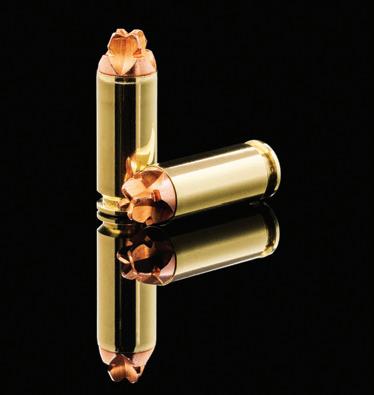
wrcamps.com
Are you looking for a high-quality, rugged and durable RV? At Western Range Camps we specialize in the design, manufacture and sale of a different type of RV called a Range Camp. Check us out and give us a call and let us design something just for you. Handcrafted, customizable and built to last!

leelock.com
The Crab Cracker allows you to measure your Dungeness crabs to determine which ones are legal to keep, and then crack them in half over the top of a 5-gallon bucket, thereby separating the two clusters from the shell and guts. Crabs cleaned this way take up half as much space as whole crabs, so you can cook twice as many in your kettle.
The Crab Cracker has four different measurements to cover minimum sizes for Oregon, Washington, California, Alaska and Canada. It’s made from solid anodized aluminum, and greatly aids in cleaning Dungeness crabs.

Rooted in American history, the Woodman’s Pal has been a do-it-all survival and land-clearing companion to our outdoorsmen and military since 1941. Handcrafted in Pennsylvania, its superior design trims, prunes, chops, blazes trails, and much more. Rugged enough for the Pacific Theater and Vietnam, yet versatile enough for everyday jobs.

northriveroutfitting.com
We offer hunts of unmatched quality. Alberta whitetail, moose, caribou and goat. When you join us on a hunt in this spectacular and remote part of British Columbia, you will feel at home and welcomed into our hunting family. That same care, hard work and attention to detail goes into everything we do.

ferryalaska.com
Ferry transportation provider to over 30 Alaska coastal communities. Walk or drive aboard to explore our 3,500mile route.
proliterods.com
Featuring our Northwest Style Downrigger rod. A Canadian-style mooching rod designed for downrigger fishing in the Northwest.

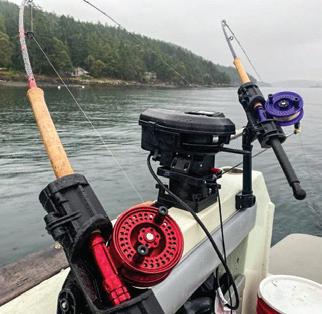
davistent.com/product/sleeping-bag-cover
Our sleeping bag cover is a great way to protect your sleeping bag and add a little warmth. You can even sleep under the stars on a starry night! Roll your sleeping bag, pillow and sleeping pad up and it’s a perfect bedroll to keep all your sleeping gear organized.

thebuffalowoolco.com
This is the big boy – these are our heaviest, most insulating, most wicking socks, and most likely the warmest sock on the planet (excepting electric).
Ultrasoft bison fiber blended with fine merino wool means there is no prickly itch from these socks. Will keep your feet warm and dry all winter long.
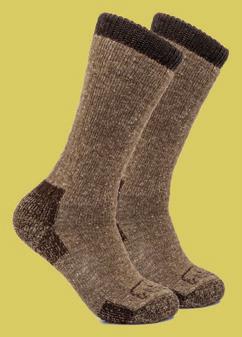

highadventureranch.com
High Adventure Ranch, the oldest big game hunting ranch in Missouri, was founded by Charles Puff in 1983. The ranch has over 30 big game species, with an estimated 2,000 animals. Our guides have over 70 years of experience. The ranch offers lodging, home-cooked meals, and full-service meat processing.

Drastically improve performance and straight-line travel of bow-mounted electric trolling motors with the LeeLock Magnum Skeg. The use of bow-mounted electric trolling motors for salmon trolling is a game changer. Not only does this skeg improve performance, it makes bow-mounted electric trolling motors much more efficient. Your batteries will run longer on a charge. The LeeLock Magnum Skeg can be a vital part of your trolling motor system!
The skeg is made of anodized 5052 aluminum. The size is 8 3/4 inches high by 10 inches wide and it’s 3/16 inch thick. The anodization keeps the aluminum from corroding in fresh- and saltwater. The LeeLock Magnum Skeg is available to fit most* 24 volt and 36 volt Minn Kota motors. It comes with clear PVC-coated stainless steel hose clamps. Call 360-380-1864 or write info@leelock.com if you have any questions about fit.

LeeLock is the only West Coast manufacturer that produces an oversized skeg for electric trolling motors.


*The LeeLock Magnum Skeg should fit all Minn Kota motors built with original skegs (fins) in the back of the motor with the exception of motors with built-in MEGA Down Imaging® Sonar, which is the large sonar unit on the bottom of the motor, not on the nose.



This new tool from Leelock will allow you to measure your Dungeness crabs to determine which ones are legal to keep. Then use the Crab Cracker to crack them in half, separating the two clusters from the shell and guts.

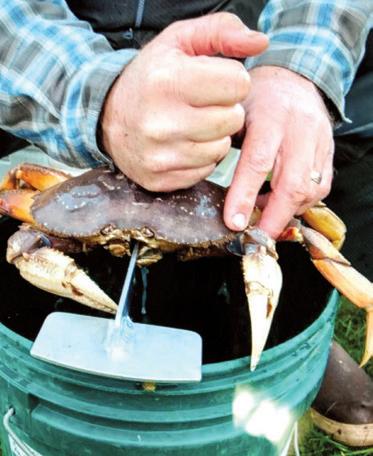
The Crab Cracker has been designed so that it sits nicely on top of a 5-gallon bucket, perfect for when you clean crabs. The bucket gives you a stable base, which makes it easier to clean – the guts and shell go into the bucket, making cleanup a snap. Crabs cleaned this way take up half as much space as whole crabs, so you can cook twice as many in your kettle.
The Crab Cracker is a unique tool made from solid aluminum, and comes in handy for cleaning Dungeness crabs.
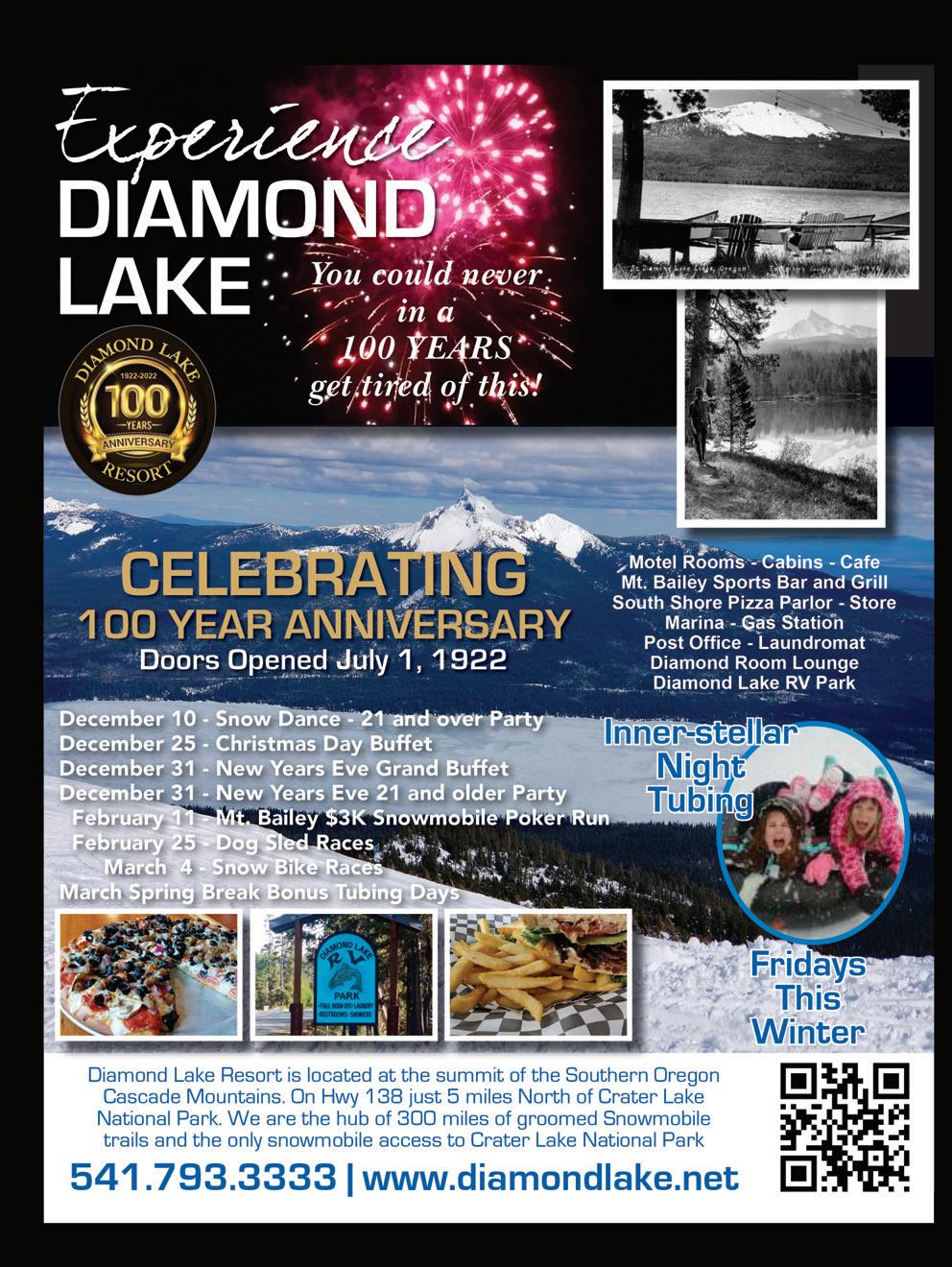
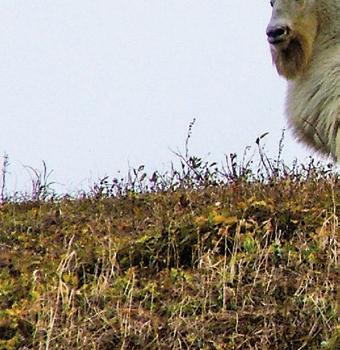

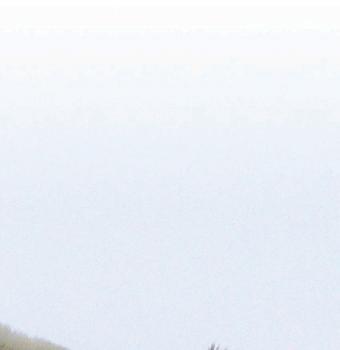
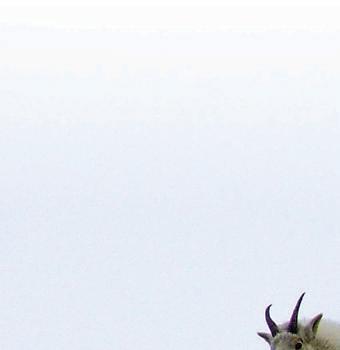


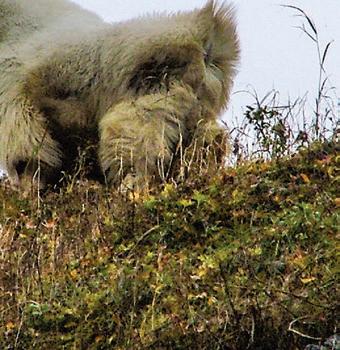 BY BJORN DIHLE
BY BJORN DIHLE
There’s no shortage of misinformation on Covid. For instance, when my wife MC tested positive, she refused the sure-fire cure of a tablespoon of Gusto and a pint of wolf urine.
Some say I’m biased when it comes to homeopathic medicines, since I aspire to be a brand ambassador for Gusto Long Distance Predator Call Lure. My opinions are based on science. From my research, as well as experience, a concoction of Gusto and wolf urine cures everything
from the jiggers (which folks most often get from handling wolf and bear scat) to the wigglers (which folks most often get from kissing their cousins).

I once contracted the wigglers and jiggers the same day during a family reunion and a couple doses cleared me up. As a bonus, it gave my microbiome superpowers that allowed my guts to digest a 4,000-piece kitten puzzle and made me feel spiritually centered.
It was a no-brainer that Covid would stand no chance to Gusto and wolf piss,
so, naturally, when MC refused to take the dose I was so considerately trying to force down her throat, it led to an argument.
“Get that out of the house! It’s going to cause a bear or wolverine to break in and start humping the sofa again!” she yelled at me.
She had a point. I don’t know if it’s the skunk anal glands or some other secret ingredient, but Gusto never fails to bring the heat. It’s not uncommon for us to be awoken by the grunts and groans of forest creatures committing
unspeakable acts against our shed, where I store several gallons of the stu . But MC’s unwillingness to take the cure put me in an awkward spot.
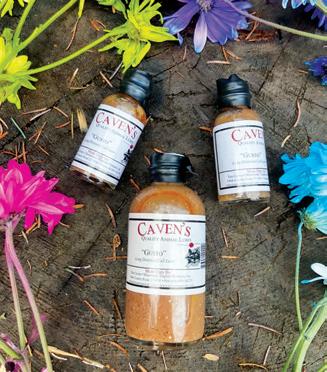
FOR MONTHS I’D BEEN dreaming about a mountain goat hunt. My brother Luke and I’d been planning to go on one the day after MC tested positive. Our two small children had symptoms as well.





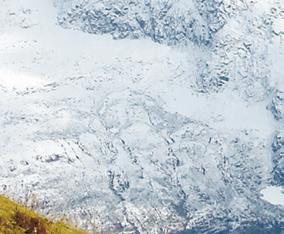


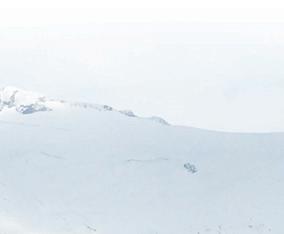

When I broke the news to Luke, I suggested that instead of going for a couple days, we stay out for a few weeks to give my family time to convalesce. MC kept interrupting our conversation with her terrible coughing. It was hard to hear my brother over the crying of my children, but I caught him saying something about whether or not
I should stay home and take care of my family.
“Look,” I told him, “a man’s got to be a man; otherwise his woman, assuming she survives this virus, will likely go find another man.”

Knowing this maxim was true, MC, from the couch where she lay semiconscious in a fever, croaked that I should go. I hate being told what to do, unless it’s by a man who is more alpha than me, which – besides maybe Brock Lesner or Chuck Norris – does not exist. So when MC commanded me to go, I did what any mature, rational man would.
“Don’t you dare tell me what to do. I’m calling o the hunt! Take that!” I yelled.

A week passed with my family
As Dihle says, “Gusto never fails to bring the heat.” But he couldn’t convince his ill wife Mary Catharine, or MC, to give the predatortrapping attractant a try when she tested positive for Covid. (BJORN DIHLE)

Two billies survey their domain. Dihle wasn’t close to 100 percent while chasing these mountain dwellers. His climb, usually no sweat, was quite a challenge this time around. (BJORN DIHLE)

Cumberland’s Northwest Trappers Supply is your one-stop trapping supply headquarters, featuring one of the largest inventories in the U.S. We are factory direct distributors on all brands of traps and equipment which allows us to offer competitive prices. Give us a try. Our fast, friendly service will keep you coming back. Request
P.O. Box 408, Owatonna, Minnesota 55060 • (507) 451-7607 trapper@nwtrappers.com • www.nwtrappers.com



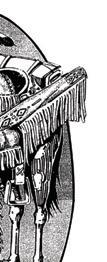
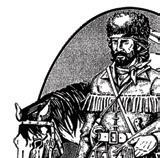


Hide Tan Formula has been used successfully by thousands of hunters and trappers across the U.S. and Canada. No more waiting several months for tanning. Now, you can tan your own hides and furs at home in less than a week, at a fraction of the normal cost. Our Hide Formula tans deer hides either hair-on for a rug or mount, or hair-o for buckskin leather. Tans all fur skins – muskrat, mink, beaver, fox, coyote, raccoon, squirrel, rabbit, etc. It also applies to bear, elk, moose, cowhide, sheep and even snakeskin. Hide Tan Formula is premixed and ready to use and produces a soft, supple Indian-style tan in five to seven days.
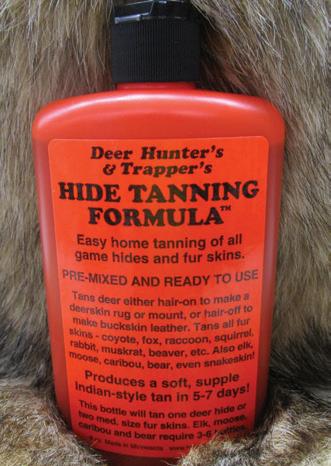
One 8-ounce bottle will tan one deer hide in two medium-sized fur skins. Bear, elk, moose and caribou require three to six bottles. Complete instructions are included. You’ll be amazed how easy it is!
Tanned hides and furs are great to decorate your home or camp and also to sell for extra income. Tanned hides and furs are in demand by black powder enthusiasts, American Indian traders, fly tyers, country trading posts and many crafters. Our products are proudly produced and bottled in the U.S. for over 20 years.
Available at Cumberland’s Northwest Trappers Supply in Owatonna, Minnesota.
Call (507) 451-7607 or email trapper@nwtrappers.com. nwtrappers.com
su ering relatively light symptoms.
Unlike MC, I am not averse to science and so I consumed a preventive dose of Gusto and wolf urine. Naturally, considering my exceptional health and high testosterone level, I was shocked when I caught the bug. Perhaps I accidentally came in contact with soy products, which are well known to
weaken immune systems and negate the e cacy of medicines and health supplements.
MC and our boys were basically back to normal when I tested positive. My window to go goat hunting was rapidly closing. Instead of moping around the house for another week, I decided to head to the high country and see what happened.
IN EARLY OCTOBER, I paddled along the completely still water of a frequently stormy fjord. My Forager, a two-person Alpacka raft, spun in lazy circles as I glassed the mountains for goats. I’d been planning to climb a ridge that historically I’d always seen goats on. That day I saw none.

On a di erent mountain, I saw what appeared to be a nanny, its kid and a lone goat right above. It was hard to tell for sure given the rain and weird storm light in the high country, but it was the most likely sign of a goat I could glass up. I beached my boat, hauled gear past the fresh tracks of a brown bear and hoisted everything high in a tree.
My family had tried to talk me out of going. My symptoms seemed pretty light; I felt stoned but I’ve lived my whole life with cognitive issues, so that didn’t worry me too much. I was also having some breathing issues whenever I exerted myself, but I’d just go slow and hope my chest would open up during the climb. I downed some Gusto before the climb in hopes that it would give me an extra kick.
My plan to camp at the treeline and perhaps even get a goat that day did not come to fruition. Hours wore on as I slowly sputtered up the mountain. Soon rain began to fall harder and a thick fog descended on the forest. A nagging voice in the back of my head kept telling me to go back and that I was too much of a wimp to make it up the mountain – let alone haul a goat down.
I hiked on, largely out of frustration. So many of my plans this year had gotten squashed for one reason or another. I wasn’t willing to relent on the goat hunt without a fight. Darkness caught me before I was anywhere near the alpine. It had taken me five hours to make 1,700 feet of what would have normally been easy climbing.
Dihle with a mountain goat hide from a previous successful hunt. Nostalgia became the mantra of this outing. “For a while I sat still and let memories of past hunts come flooding back,” he writes. (BJORN DIHLE)
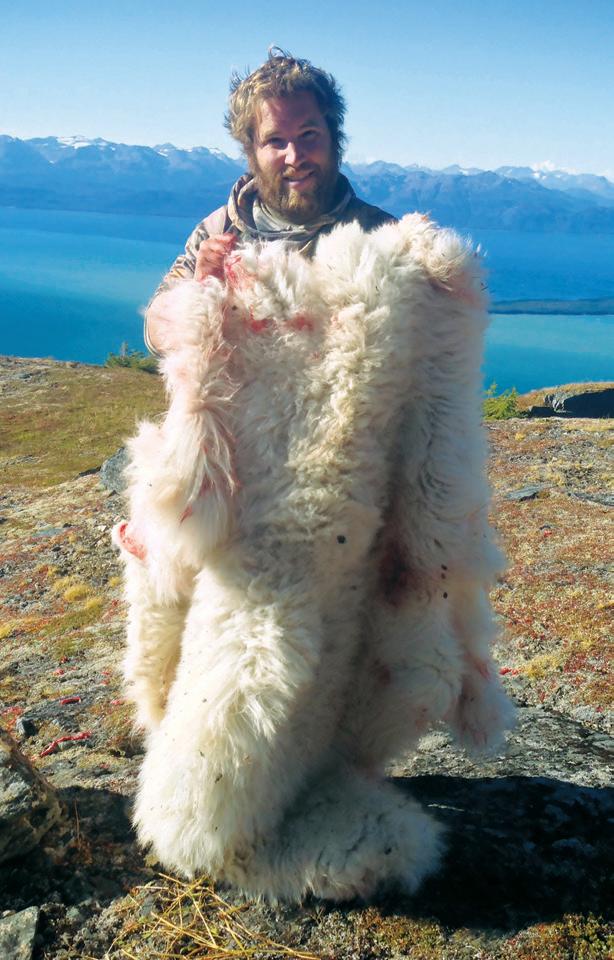
I turned on my headlamp and continued until I found a tiny, relatively flat bench that I could pitch my tent atop. I was shaky, weak and exhausted. An old tent pole snapped, and I jerry-rigged a shelter that would do fine unless it was exposed to any wind.
Another one of my Covid symptoms was insomnia. I didn’t sleep at all that night.


BEFORE FIRST LIGHT, I continued climbing into the gloom. I broke out of the treeline and entered a steep boulder field. It was here, atop the slippery, shifting rocks, that I admitted to myself I was in no shape to be chasing goats. Still, I continued until I was at the same elevation where I’d seen the goats from the ocean the morning before. Soon, holes in the clouds revealed blue sky and the slopes and ridges of the mountain. I waited with a mixture of excitement and apprehension, hoping and not hoping to see a goat appear out of the gray.
When the fog had mostly dissipated and I verified there were no goats visible from my vantage, I strapped on crampons and began traversing the steep slope to where I’d seen the goats the day before. If the lone goat was a young billy, or if I came across a billy, it was going to be really hard not to pull the trigger.
The wind was perfect as I clambered
nearer and for a minute or two I felt like I was hunting. Then, I saw two white goatshaped rocks and realized they were what I’d thought had been a nanny and kid. Above was another white rock that I thought had been a lone goat.
I sat alternating between glassing and staring blindly out on the wilderness. I’d studied just about all the nooks and crannies of the mountain I could access. There was nothing – not even hair, pellets or tracks. The surrounding mountains appeared similarly empty.




I’d been hoping to see bears and even had a black bear tag in my pocket. There’s often a lot of bears up high during fall hunts when there’s a good berry crop. Some friends who harvested “blueberry blackberries” bears claimed it was some of the best meat. There were few berries up high this year, however, so no reason for a bear to be around.
For a while I sat still and let memories

of past hunts come flooding back. On the cli a half-mile away was where Luke had shot a billy that had been gored by another goat. That ridge is where I watched Luke and our younger brother Reid make an epic stalk on a billy. And that mountain just beyond was where Reid and I had made one of the longest and coolest stalks on two big billies that ended with us within range of the goats, but in such cli y terrain that we’d likely lose one if we pulled the trigger.
I’ll never forget setting our rifles aside, sitting and watching those two animals as they watched us from a pinnacle 50 yards away. Twenty years ago, when I first began exploring this area, it was common to see small herds or single animals on di erent ridges and slopes. But now, it looked all but empty.
Finally, I glassed three goats several miles away. They were bedded on a steep slope, surrounded on all sides by expanses
A bright full moon overlooks the mountains, a scenic payo to all the climbing and hiking. (BJORN DIHLE)

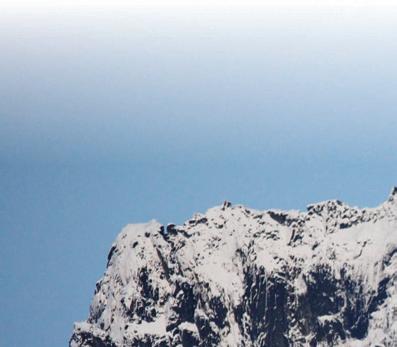

of cli s. No man’s land. Even Luke, who is the craziest goat hunter I know, wouldn’t have been able to access them.

I MADE IT DOWN to the ocean that evening and, since it was calm, began the paddle home. The sun bit red on the mountain and, before long, shadows darkened into gloom. As I paddled into the deep night, I had an incredible epiphany, which both explained how I’d gotten Covid and why I had not gotten a goat.


I couldn’t believe I hadn’t realized it before. I often cook meat with soy sauce. I’d been such an idiot. There is soy in soy sauce. This obviously countered my Gusto-and-wolf-urine Covid treatment. Suddenly things made sense again.
I paddled home vigorously with a newfound purpose to inform MC, my brothers and all the world. ASJ

Editor’s note: Bjorn Dihle is a lifelong Alaskan and the author of the book A Shape in the Dark: Living and Dying with Brown Bears. Order it at amazon. com/Shape-Dark-Living-Dying-Brown/ dp/1680513095.
